Healthcare, at its core, revolves around people. From intricate surgeries to innovative health tech, the ultimate goal remains constant: improving patient outcomes. Understanding the myriad perspectives of patients and providers is central to achieving this.
Enter focus groups. More than mere conversation circles, focus groups in healthcare have become essential feedback tools that drive change.
Understanding the Significance of Focus Groups in Healthcare
Focus groups comprise select individuals representing specific demographics, brought together to deliberate on designated topics. Within healthcare, they’re more than just discussions—they’re symposiums of lived experiences, professional insights, and potential solutions.
The Expanding Role in Healthcare
Cracking the Patient Experience: More than just gauging satisfaction, focus groups examine patients’ emotional journeys, pinpointing precise moments of unease, joy, or confusion during their healthcare experiences.
Shaping Medical Innovations: As tech pushes the boundaries of medicine, these groups serve as critical sounding boards. They relay potential user needs and unvoiced concerns, ensuring innovations are both groundbreaking and grounded in reality.
Informing Health Policies: As policies lay the framework for practice, focus group insights ensure these frameworks resonate with real-world needs and challenges.
Diving Deeper into the Pros and Cons
Advantages of using focus groups in a healthcare setting:
- A Spectrum of Views: A well-conducted focus group offers a kaleidoscope of perspectives, often uncovering nuances missed in larger surveys.
- Interactive Feedback Loop: Real-time conversations allow for spontaneous questions, generating richer data.
- Revelation of Uncharted Concerns: These groups can spotlight issues entirely off researchers’ radar, paving the way for preemptive solutions.
Disadvantages of using focus groups for healthcare products and services:
- Qualitative versus Quantitative: Focus groups give depth, not breadth. They reveal the ‘why’ but may not always represent the majority sentiment.
- Dominance Bias: The loudest voices might overshadow subtler, equally vital inputs.
- Resource Intensity: From recruitment to analysis, focus groups demand time, expertise, and tools.
Methodology, Tools and Techniques
Strategic Recruitment: Leveraging digital platforms or specialised patient databases can ensure a diverse participant mix.
Comprehensive Recording: Advanced audio and video equipment capture every nuance for richer patient experience analysis.
Expert Transcription: Professional services can translate discussions into data-ready formats.
Sophisticated Data Analytics: With tools like NVivo, qualitative data becomes actionable insights.
Embracing Digital Evolution: Platforms like Webex or Google Meet now facilitate virtual focus groups, erasing geographical boundaries and logistical hiccups.
Examples of Focus Group questions for healthcare services
Given the broad spectrum of the healthcare field, here is a blend of open-ended and closed questions that can be adapted across various healthcare contexts:
Open-ended Questions:
Understanding Patient Experience: “Can you walk us through your last visit to our facility? What stood out to you the most?”
Identifying Pain Points: “What challenges or inconveniences have you encountered while accessing our healthcare services?”
Treatment and Follow-up: “Describe how you felt about the communication and guidance you received post-treatment. Were there areas you wish had been addressed differently?”
Digital Health Experience: “How has your experience been using our online patient portal or telehealth services? What improvements would you suggest?”
Closed Questions:
Closed questions can yield direct, quantifiable responses, while open-ended ones allow patients to share more comprehensive insights, making them a rich source of qualitative feedback. Both are crucial for refining healthcare delivery. Here are some examples of closed questions:
Facility & Staff Evaluation: “On a scale of 1-10, how would you rate the cleanliness and ambience of our facility during your last visit?”
Appointment Scheduling: “Was the process of scheduling your last appointment straightforward and convenient? (Yes/No)”
Professional Interaction: “Did our medical staff explain the procedures and treatments in a manner easy for you to understand? (Yes/No/Somewhat)”
Privacy Concerns: “Do you feel your personal and medical information is kept confidential with us? (Yes/No)”
Exploring Mental Healthcare: Insights from European Adults with Lived Experiences
Background
Mental well-being is fundamental to society, and while the World Health Organisation (WHO) underscores pillars like availability, accessibility, quality, and acceptability of healthcare, there’s a noticeable gap in high-quality mental healthcare for many Europeans. Tapping into the perspectives of those with firsthand experiences can yield deeper insights. This study aimed to collate the experiences of adult Europeans navigating mental healthcare.
Methodology:
The study engaged 50 participants from various European countries with diverse mental health challenges. Their experiences spanned both private and public sectors, covering inpatient and outpatient care. These participants were grouped for focus group interviews. All sessions, totalling seven, were meticulously audio-recorded and transcribed. A comprehensive thematic analysis led to the identification of five major themes, further divided into 13 subthemes.
Key Findings:
The Quest for Assistance:
- Recognising when professional intervention is needed.
- Confusion about where to turn for aid.
- The critical nature of timely assistance.
The Waiting Game: Assessment & Treatment:
- Feelings related to being given priority or lack thereof.
- Emotions of feeling forgotten during extended referral processes.
Treatment: A Mosaic of Needs:
- The role of medication and dedicated professionals.
- Collaboration and consensus on treatment routes.
The Pillars of Care: Consistency and Dignity:
- The undeniable value of consistent care is rooted in empathy.
- The need for a respectful care environment.
Roadmap to Refinement:
- Simplifying and enhancing care access points.
- Amplifying mental health awareness.
- Recognising patients as unique individuals with untapped potential.
This study offers a profound, user-centred lens into the world of mental healthcare in Europe, suggesting pathways to better, more compassionate care.
Final Thoughts
The healthcare universe is expansive, with every innovation, policy, or procedure having profound ripple effects. Focus groups serve as invaluable touchpoints, grounding these ripples in the reality of patient experience. As health standards evolve, the nuanced feedback from such groups ensures that change remains not just technologically advanced but deeply human-centric.
Get regular insights
Keep up to date with the latest insights from our research as well as all our company news in our free monthly newsletter.
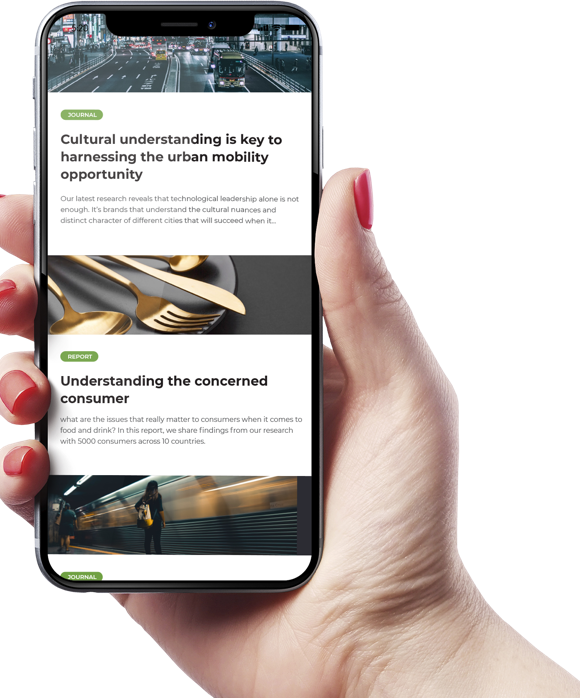
With retail shelves brimming with products promising plumper lips, fewer wrinkles, and flawless skin, the global health, beauty, and wellness market is on track to reach an estimated seven trillion dollars. And beauty consumers are not holding back. Consumers worldwide are scouring retail and digital shelves to find legacy brands and start-ups. Everything has changed, from beauty products to how they are marketed to even the end user.
Wellness and self-care are at centre stage, and the beauty and personal care industry is experiencing a profound shift towards sustainability, ethical sourcing, and self-care rituals that help destress. These shifts reflect a broader cultural movement where individuals prioritise external beauty and inner well-being. With a conscious investment in self-care, consumers seek products that facilitate a deeper connection with themselves, marking a transformative shift in the industry.
While beauty consumer is ready to open their wallets to look and feel good, they all have unique values and behaviours. So, how do beauty brands target their consumers?
The good news is with the growth of digital media, targeting the right people is easier than ever —but to do that effectively, brands need to understand different brand personas clearly.
How Beauty Personas Help Brands Understand What Their Customers Want
A consumer persona is a detailed profile representing a specific segment of a brand’s target audience. It embodies demographic information, behavioural characteristics, motivations, and pain points, giving brands a vivid depiction of their customers and their desires.
When beauty brands understand and craft these detailed personas, they can better align their product offerings with the unique needs of each consumer segment, providing personalised solutions that resonate more profoundly with their target audience.
Understanding consumer behaviour, buying habits, and preferences is key to staying competitive in the ever-evolving beauty industry. Different types of buyers each come with their unique expectations, wants, and needs. In this post, we will uncover the personas of eight distinct types of beauty buyers to help beauty brands navigate this multifaceted market.
From values and priorities to buying habits and preferences, each type of beauty buyer presents a unique opportunity for brands to resonate on a deeper level, helping brands better connect with these segments.
Segment 1 – Conscious Consumer
Overview
Conscious Consumers represent a growing segment in the beauty industry. Their buying behaviour is strongly influenced by environmental sustainability, ethical sourcing, and social responsibility in their beauty purchases. Their focus extends beyond personal benefit; they often scrutinise labels for eco-friendly ingredients and are willing to pay a premium for products that align with their values.
Values and Priorities
- Environmental Sustainability: Conscious Consumers actively seek products with minimal environmental impact. They value and support brands that practice responsible sourcing and manufacturing. They are often willing to invest more in organic, natural ingredients harvested sustainably.
- Ethical Integrity: This includes a commitment to cruelty-free testing, fair wages, and social justice within the company’s supply chain. They seek transparency and honesty in the products they buy.
- Transparency: Full disclosure of ingredients, sourcing, and corporate practices is vital to Conscious Consumers. They appreciate brands that are open about their values, supply chain, and manufacturing practices.
Product Preferences
- Natural and Organic Ingredients: Emphasis on botanicals, vitamins, and nourishing substances with a low ecological footprint. They favour products that use renewable resources and have a minimal environmental impact.
- Reusable or Recyclable Packaging: A strong preference for minimalistic and recyclable packaging, avoiding single-use plastics and excess materials.
- Cruelty-free Products: Items not tested on animals, certified by reputable agencies, are highly appealing to this segment.
Current Trends and Impact on the Beauty Industry
- Growth of Eco-Friendly Brands: The rising demand for green beauty products has encouraged many brands to reformulate and repackage, driving innovation and new trends within the industry.
- Transparency in Labeling: Brands now offer detailed information about ingredients and their sourcing, increasing consumer trust and loyalty.
- Influence on Other Segments: The principles of the Conscious Consumer are spreading to other segments, broadening the impact on the beauty industry. It is causing ripple effects, forcing the entire industry to reconsider their practices.
Segment 2 – The High-End Hauler
Overview
High-End Haulers are defined by their taste for luxury, exclusive, and often designer beauty products. Quality, prestige, and exclusivity drive their purchasing decisions. They are not just buying products; they are buying a luxurious experience and a symbol of status. High-end haulers are often willing to invest substantially in beauty products, seeking the finest ingredients, elegant packaging, and a brand name that resonates with luxury and success.
Values and Priorities
- Quality Over Quantity: High-end haulers prefer fewer but more premium products. They value the sophistication of formulations, textures, and sensory experiences that luxury products offer.
- Brand Prestige: They often opt for well-known luxury brands that offer a status symbol. The brand’s heritage, story, and reputation can be as important as the product.
- Personalised Experience: Tailored products, personalised recommendations, bespoke packaging, and exceptional customer service are vital to this segment.
Product Preferences
- Designer Brands: High-end haulers are attracted to exclusive brands that signify a certain social status. The allure of limited editions, collaborations with designers, and unique products drive their purchases.
- Innovative Formulations: Cutting-edge technology, rare ingredients, and pioneering techniques that promise unique benefits and superior performance are particularly appealing.
- Luxurious Packaging: Packaging that exudes elegance and exclusivity, often with intricate designs and high-quality materials, is highly valued by this beauty segment.
Current Trends and Impact on the Beauty Industry
- Rise in Niche Luxury Brands: There’s a surge in smaller, niche luxury brands offering bespoke services, exclusive products, and unique brand stories. This has led to a more diverse and vibrant luxury beauty landscape.
- Technology Integration: Virtual try-ons, augmented reality, AI-powered recommendations, and other technological innovations enhance the shopping experience, making it more interactive and personalised.
- Sustainable Luxury: Some high-end brands are incorporating eco-friendly practices and aligning with the values of Conscious Consumers. This trend reflects the growing importance of sustainability, even within the luxury segment.
Segment 3 – The Skinminalist
Overview
Skinminalists embrace a minimalist approach to skincare, focusing on essential, multitasking products that offer efficiency without sacrificing effectiveness. Instead of following a complex, multi-step routine, Skinminalists believe in the ‘less is more’ philosophy. They aim to cut through the noise and focus on what matters, often relying on a few core products that meet all their skin’s needs.
Values and Priorities
- Simplicity: A preference for a simplified routine with fewer products that can still deliver results. They often look for streamlined collections and multi-purpose items.
- Quality Ingredients: For Skinminalists, each product must serve multiple purposes and contain high-quality, effective ingredients. They value formulations that are thoughtful and intentional.
- Transparency: Understanding what each product contains and why is vital for Skinminalists. They often research and educate themselves about ingredients and look for brands that share their philosophy.
Product Preferences
- Multitasking Products: Items that can cleanse, hydrate, and treat simultaneously are appealing, as they simplify the routine and reduce clutter.
- Clean Formulations: Preference for products free from unnecessary additives, fragrances, and fillers. They look for straightforward, effective formulations.
- Efficiency: Products that offer quick, visible results with minimal effort. Time-saving solutions are key for this segment.
Current Trends and Impact on the Beauty Industry
- The decline of 10-Step Routines: As a direct counter to elaborate multi-step routines, the skinminalist approach is gaining traction. It represents a shift towards mindful consumption and thoughtful beauty practices.
- Rise of Indie Brands: Smaller brands focusing on transparent, minimalist products are gaining popularity. Their approach resonates with the skinminalist philosophy, and they often build a strong community around these values.
- Alignment with Conscious Consumer Values: There’s a noticeable overlap with the values of Conscious Consumers, especially in terms of sustainability and ingredient integrity.
Segment 4 – DIY Diva
Overview
DIY Divas represent a creative and resourceful segment in the beauty industry. These individuals prefer making beauty products, often using natural ingredients in their kitchens. Whether it’s creating facial masks, body scrubs, or hair treatments, DIY Divas enjoy the process of crafting personalised solutions. They value the authenticity, customisation, and empowerment of creating their beauty essentials.
Values and Priorities
- Creativity: DIY Divas enjoy experimenting and creating. They enjoy mixing, measuring, and crafting products tailored to their needs.
- Independence: They love controlling what goes into their products, ensuring they know every ingredient.
- Economic and Environmental Consideration: DIY often means cost savings and reduced packaging, aligning with eco-friendly practices.
Product Preferences
- Natural Ingredients: DIY Divas often turn to natural, easily accessible ingredients such as honey, oats, essential oils, and herbs.
- Customisable Solutions: Products tailored to individual preferences, skin types, and specific concerns are highly appealing.
- Do-it-Yourself Kits: Some brands offer DIY kits with all the necessary ingredients and instructions, which is particularly appealing to this segment.
Current Trends and Impact on the Beauty Industry
- Rise of DIY Recipes and Tutorials: Social media platforms are flooded with DIY beauty tutorials, recipes, and inspiration, fostering a community of like-minded individuals.
- Brands Offering DIY Solutions: Recognising this trend, some brands have started offering DIY kits, ingredients, and guidance, bridging the gap between traditional retail and DIY.
- Sustainability and Waste Reduction: The DIY approach often reduces packaging and waste, contributing positively to environmental sustainability.
Segment 5 – Wellness Warrior
Overview
Wellness Warriors view beauty through the lens of overall wellness and holistic health. For them, beauty is not just skin-deep; it’s intertwined with mental, physical, and emotional well-being. They often seek products that contribute to their overall wellness, such as aromatherapy oils, wellness supplements, and products infused with calming or energising ingredients.
Values and Priorities
- Holistic Approach: Wellness Warriors see beauty as part of a broader wellness landscape. They often integrate their beauty routine with their daily health practices, looking for products that nourish the body, mind, and soul.
- Mindful Consumption: They approach beauty with mindfulness, considering how products feel, smell, and contribute to their well-being.
- Natural and Healing Ingredients: They are often drawn to ingredients that have traditional healing properties, such as herbs, essential oils, and botanical extracts.
Product Preferences
- Therapeutic Products: Items that offer more than aesthetic benefits, such as stress relief, relaxation, or energy boosting, appeal to Wellness Warriors.
- Nutritional Supplements: Beauty supplements that support skin, hair, and nail health from within align with the holistic approach of this segment.
- Mindful Brands: Brands emphasising wellness, mindfulness, and holistic health often resonate with Wellness Warriors.
Current Trends and Impact on the Beauty Industry
- Rise of Beauty Wellness: Fusing beauty with wellness practices has given birth to a new industry subset focusing on overall well-being. This includes products like face masks with aromatherapy benefits or body lotions infused with calming herbs.
- Integration with Other Wellness Practices: Beauty brands collaborate with wellness experts, offering products that align with yoga, meditation, or other holistic practices.
- Sustainability and Ethical Consideration: Often, Wellness Warriors align with the Conscious Consumer segment, seeking ethically sourced and environmentally friendly products.
Segment 6 – Savvy Shopper
Overview
Savvy Shoppers are characterised by their smart, budget-conscious approach to purchasing beauty products. They hunt for deals, compare prices, read reviews, and often know where to find the best value. They are not driven by brand loyalty but are motivated to find quality products within their budget. Their decisions are often informed, well-researched, and rational.
Values and Priorities
- Cost-Effectiveness: Price plays a significant role, but Savvy Beauty Shoppers are not just looking for cheap products. They want quality items at a reasonable price, providing real value for money.
- Informed Decisions: They often research, read reviews, and compare options. Knowledge is power for this segment, and they usually make well-informed choices.
- Flexibility: Brand loyalty is less critical for this segment. They are open to trying new brands and products if they offer better value or fit their needs.
Product Preferences
- Affordable Quality Products: Savvy Shoppers look for excellent quality products without breaking the bank. They are often drawn to drugstore brands that deliver results at affordable prices.
- Multi-Benefit Products: Items that provide multiple benefits or can serve various purposes are attractive, as they offer greater value.
- Subscription and Bundling Offers: Many Savvy Shoppers take advantage of subscription services or bundle offers that provide savings and convenience.
Current Trends and Impact on the Beauty Industry
- Rise of Direct-to-Consumer Brands: Many affordable, quality brands bypass traditional retail channels, offering better pricing to Savvy Shoppers.
- Influence of Online Reviews: The vast availability of online reviews and beauty blogs is crucial in guiding Savvy Shoppers’ decisions.
- Use of Technology: Price comparison apps, deal websites, and online shopping have become essential tools for this segment, allowing them to find the best deals quickly.
Segment 7- Beautopian
Overview
Beautopians represent a growing and vibrant segment within the beauty industry. For these individuals, beauty goes beyond a mere routine; it’s an integral part of their lifestyle. They view beauty as a path to wellness and joy, often sharing their beauty experiences and discoveries on social media. Mostly comprised of the younger generations like Gen Z and Millennials, Beautopians are enthusiastic about quick-result products and minimal downtime treatments. Though females dominate this segment, there’s a notable increase in male participation.
Values and Priorities
- Beauty as a Lifestyle: Beauty is not a chore or an obligation but a joyful pursuit. It’s intertwined with daily life and contributes to overall happiness and well-being.
- Instant Gratification: The need for quick and visible results is essential. Products or treatments that provide immediate effects are particularly attractive to Beautopians.
- Social Sharing: This segment commonly shares beauty journeys, routines, and successes on social platforms. It creates a sense of community and connection with like-minded individuals.
- Inclusivity and Diversity: While mostly female-oriented, the Beautopian community is beginning to include more male influencers, reflecting a more inclusive and diverse understanding of beauty.
Product Preferences
- Fast-Acting Products: Items that offer immediate results, whether a face mask that instantly brightens or a serum that quickly hydrates, are appealing to Beautopians.
- Innovative Treatments: Open to aesthetic treatments with minimal downtime like PICO laser, Beautopians seek innovations that align with their fast-paced lifestyles.
- Social Media-Friendly Packaging: Products that look good on Instagram or TikTok might be more attractive, as they complement the social-sharing aspect of the Beautopian lifestyle.
Current Trends and Impact on the Beauty Industry
- Rise of Skinfluencers: The increase in beauty influencers, especially male skinfluencers, has helped shape new perceptions of beauty and opened doors for more inclusive product lines.
- Demand for Quick Solutions: The need for instant gratification is driving innovation in product development, with a focus on formulas that provide immediate results.
- Integration of Technology: This segment’s connection between beauty and social media leads to more tech-savvy marketing strategies, such as AR try-ons or virtual beauty consultations.
Segment 8: Non-Conformist Revolutionary
Overview
Non-conformist revolutionaries signify a dynamic shift within the beauty industry. Traditional norms or expectations do not bind these individuals. They see beauty as a platform for self-expression, revolution, and challenging societal conventions.
Attracting a broad age range, especially younger cohorts, is characterised by their bold choices, eco-conscious mindset, and refusal to fit into a one-size-fits-all mould. Gender fluidity is prominent in this group, and they don’t define beauty based on gender but on authenticity and individuality.
Values and Priorities
- Rebellion as Expression: Beauty becomes a tool to challenge societal norms and stereotypes, celebrating uniqueness and difference.
- Eco-consciousness: With an awareness of the planet’s fragility, they prioritise sustainable and eco-friendly products, advocating for a cleaner beauty industry.
- Fluid Beauty: Rejecting gender-based boundaries, they appreciate beauty products made for everyone, regardless of gender.
- Authentic Narratives: Honest brand stories and transparency are critical. They are more likely to support genuine brands and not just marketing a facade.
Product Preferences
- Eco-Friendly Packaging: Sustainable materials, refillable options, and minimal waste are the order of the day. They prefer brands that take a clear stand on reducing environmental impact.
- Bold and Edgy Products: From vibrant hair dyes to unconventional makeup shades, they seek products that help them stand out.
- Gender-Neutral Options: They gravitate towards brands that don’t categorise products by gender, making beauty accessible for everyone.
- Transparent Ingredients: Knowing what’s inside their beauty products is crucial. Clean and cruelty-free formulations have a higher appeal.
Current Trends and Impact on the Beauty Industry
- Rise of Eco-Brands: As the demand for sustainable products grows, brands adopt eco-friendly product formulation and packaging practices.
- Blurry Gender Lines: The traditional division of “men’s” and “women’s” products is diminishing. Brands are now launching gender-neutral lines to cater to the Non-Conformist Revolutionary.
- Shift in Beauty Narratives: Marketing campaigns are becoming more inclusive, focusing on individuality and rejecting the conventional notions of beauty.
- Embracing Raw Beauty: Brands increasingly promote unedited and unfiltered beauty, celebrating scars, freckles, and other “imperfections” as beautiful.
Final Thoughts
Understanding consumer segments in the beauty industry is necessary for today’s highly competitive and ever-evolving beauty market. As illustrated by the eight distinct segments and their respective personas, consumer behaviour in the beauty space is multifaceted and complex. A diverse range of values, preferences, and influences shapes it.
These segments, however, are not isolated entities. They often overlap and intersect, and individuals may identify with multiple segments depending on their unique circumstances and evolving needs. As such, these personas serve as flexible guides rather than rigid classifications.
With the new age of personalised marketing, a deep understanding of these segments enables brands to craft tailored messages that resonate with their target audiences, foster brand loyalty, and drive consumer action. It’s about seeing consumers as individuals with unique needs and aspirations and addressing these with empathy, authenticity, and respect.
Moreover, as societal values and consumer awareness evolve, new segments will likely emerge, and existing ones will further diversify. Sustainability, ethical sourcing, inclusivity, and digital influence are already reshaping the consumer landscape, pushing brands to innovate and adapt. As we navigate this exciting trajectory, ongoing market research will be crucial in staying attuned to these shifts and ahead in the game.
Ultimately, every consumer has a story, which is part of your brand’s narrative. By listening to these stories, understanding these personas, and responding meaningfully, your brand becomes a part of their story. This symbiotic relationship is the essence of successful branding in the beauty industry – and beyond.
Want to download the detailed personas of your beauty consumers? Get our full guide here.
The United Kingdom, often depicted as a homogenised tapestry of afternoon tea and red buses, is a labyrinth of complexities that can confound even the most seasoned marketers. To the uninitiated, it’s easy to fall into the trap of seeing the UK as a monolithic entity, particularly when so many international perceptions are shaped by London’s towering influence. Yet, beneath the canopy of its collective identity lies a medley of regions, each with its distinct cultural heartbeat and consumer behaviour.
Foreign brands seeking to penetrate this market often discover that what thrives in Manchester might falter in Cardiff, and what resonates in Belfast may not necessarily translate in Edinburgh. As globalisation tugs on the threads of local identities, it has never been more pressing for brands to understand the intricate dance of regionalism that defines the UK.
The UK: A Mosaic of Identities
Venture beyond the capital’s bustling streets, and you’ll find a nation teeming with rich histories, vibrant traditions, and – crucially for marketers – distinct consumer habits.
Let’s begin with the broader picture. The United Kingdom is not merely one country; it’s a union of four: England, Scotland, Wales, and Northern Ireland. According to the Office for National Statistics, as of the last census, England housed approximately 84% of the UK’s population, with Scotland accounting for 8%, Wales around 5%, and Northern Ireland close to 3%. Yet, despite these disparities in population, each country has cultivated its own identity, traditions, and consumer patterns.
England, while the most populated, varies significantly within its own boundaries. The cosmopolitan desires of London’s population, boasting a GDP per capita of 56,431 British pounds as of 2021, often differ significantly from the more industrious North or the coastal South.
In Scotland, there’s a profound sense of national pride. A study by VisitScotland showed that over 60% of Scottish consumers preferred buying local products, a number that spikes during key cultural events and holidays.
Wales, on the other hand, retains a robust commitment to its linguistic heritage. Brands such as Lloyds Bank have acknowledged this by offering services in both English and Welsh, addressing the fact that over 870,000 people, or 29% of the Welsh population, can speak the Welsh language, according to the Welsh Language Commissioner’s office.
Then there’s Northern Ireland, a region with its own unique set of socio-political dynamics. Brands seeking to appeal here must understand that consumer choices often intersect with deeper cultural and historical narratives.
And we’re just scratching the surface. Dive deeper into the individual counties of these nations – from Cornwall’s coastal towns to the Scottish Highlands – and the tapestry grows even more intricate. For instance, Oxford’s average salary in 2022 stood at about £37,000, surpassing the UK’s average, hinting at a more affluent consumer base.
The takeaway? A single, blanket strategy for the UK is not just simplistic; it’s commercially naive. Each region, each country, has its own pulse, its own desires, and its own buying triggers. The question then isn’t whether to localise your approach but how.
Consumer Trends Across the UK: Navigating Unified and Divergent Waters
If there’s one certainty about the UK, it’s that you’ll find as many unifying threads as you will divergences. As marketers, understanding these shared trends while paying heed to regional specialities is paramount. Let’s embark on a whirlwind tour of what binds and what differentiates.
Unified Trends:
Across the UK, certain tendencies bridge the gaps between regions. Digital consumption, for instance, is ubiquitous. According to Ofcom’s latest report, 96% of households in the UK have internet access, and a staggering 88% of adults use smartphones. This digital integration has seen the e-commerce sector skyrocket, with the UK boasting the most advanced e-commerce market in Europe. In 2023, the country expects to have nearly 60 million e-commerce users — leaving only a minority of the population as non-digital buyers. As such, e-commerce has undeniably become the norm for shoppers everywhere in the UK, with the extensive online shopping industry influencing UK consumers daily.
Moreover, a shared interest in sustainability is blooming. Two-thirds of UK consumers say they’ve changed their behaviour to be more sustainable. From packaging to product sourcing, the green shift is palpable and imperative to address.
Regional Specialties:
Despite these shared trends, diving deeper into regional waters unveils distinct currents.
Take food preferences, for example. A YouGov survey found that while 68% of English consumers opt for tea as their go-to brew, in Scotland, it’s a closer contest, with coffee garnering a 48% preference. Or consider fashion, where regions like London and Manchester are more receptive to high-end brands, while areas like the West Midlands show a higher inclination for value-for-money retail, as per the UK’s Consumer Spending Report in 2020.
Local festivals also play a role in consumer trends. St. David’s Day in Wales sees a surge in the sale of traditional Welsh products, while Scotland’s Hogmanay is not just a New Year’s celebration but a catalyst for various sectors, from food and beverage to tourism.
Relevance in Resonance:
While these insights might seem like data points in isolation, they are, in reality, the keys to unlocking genuine consumer resonance. A brand’s ability to navigate these unified and divergent waters will determine its success in the dynamic UK market. Whether launching a digital campaign or positioning a product aligned with regional preferences, marketers are tasked with finding the balance between the general and the specific. The landscape may be intricate, but therein lies its charm – and opportunity.
Common Misconceptions about the UK Market: The Peril of Over-Simplification
In marketing, stereotypes can be a double-edged sword. While they can offer an easy route to comprehend a foreign market quickly, they can just as swiftly mislead, resulting in branding blunders or marketing misfires. With its rich tapestry of regional identities and international prominence, the UK has been subject to numerous such misconceptions. Let’s debunk a few.
The London-centric View:
With its iconic skyline and global reputation, London often becomes the default lens through which the UK is viewed. However, equating London’s preferences to the entirety of the UK’s is a gross oversight. Consider the fact that London houses only about 13% of the UK’s population. Moreover, consumers in cities like Birmingham or Manchester have distinct shopping habits and brand loyalties compared to London.
Stereotyping Regions:
From the stoic Scot to the passionate Welsh, regional stereotypes abound. But marketers would do well to tread carefully here. For instance, the notion that all Scots are frugal is debunked by data from the Scottish Household Survey, which highlighted their propensity for luxury goods in certain regions. Similarly, pigeonholing Welsh consumers as primarily rural overlooks the dynamic urban centres like Cardiff, which, according to the Welsh Government statistics, has seen a 12% growth in retail businesses in the last five years.
Over-generalisation of Buying Power:
It’s an age-old myth that the South of England, compared to the North, has uniformly higher buying power. While areas like London and Oxfordshire might boast higher average incomes, cities in the North, such as Leeds or Newcastle, have seen significant economic growth, with the latter experiencing a 5.5% rise in its GDP in 2020.
The UK: One Size Doesn’t Fit All:
Navigating the UK market demands a keen understanding that its regions are as varied in consumer behaviour as they are in culture and history. Misconceptions can not only hurt a brand’s image but can also translate to significant financial losses. As the adage goes, “assume” makes an “ass” out of “u” and “me.” In the intricate dance of the UK’s consumerism, leading with knowledge, not assumption, is vital.
Implications for Marketing and Market Research: Crafting a Symphony from Regional Notes
Armed with the knowledge that the UK is a medley of regions, each humming its own tune, marketers are faced with the daunting yet exhilarating task of orchestrating a symphony that resonates universally and acknowledges these unique melodies. Here’s the maestro’s guide to achieving just that.
Localising Strategies:
The efficacy of a message often lies in its relevance. Brands like McDonald’s have brilliantly tailored their menus and marketing to resonate with regional preferences, introducing the likes of the ‘Bacon Roll’ in England and the ‘Haggis & Turnip Pie’ in Scotland during special promotions. This regional adaptation is no mere marketing gimmick; according to a Nielsen report, products tailored to local tastes have a 50% higher chance of market success in the UK.
Regional Test Markets:
Using specific regions as testbeds can offer invaluable insights. For instance, a product aimed at urban, cosmopolitan audiences might first be introduced in cities like London or Manchester.
Cultural Sensitivity:
Brands must tread the delicate balance of local authenticity without veering into cultural appropriation or insensitivity. The UK’s Advertising Standards Authority reported that culturally insensitive ads saw a 60% higher negative engagement rate. Thus, the mantra is simple: appreciate, don’t appropriate.
The Digital-Physical Balance:
While the digital realm is a dominant force, the physical world still holds significant sway. Brands must, therefore, weave a strategy that seamlessly integrates both.
Consumer Feedback Loops:
With the dynamic nature of consumer preferences, establishing robust feedback mechanisms is non-negotiable. According to a report by Trustpilot, 89% of UK consumers read reviews before making a purchase, emphasising the critical role of consumer voices in shaping brand perceptions and strategies.
Embracing the UK’s Diversity:
Marketers must see the UK not as a challenge but as an opportunity. The diversity offers a playground to craft nuanced, engaging, and effective strategies. However, the crux lies in the research depth, the cultural appreciation, and the agility to adapt. The UK’s consumer landscape isn’t a puzzle to solve but a narrative to co-write, one region at a time.
Case Studies: Insights from the Trenches
When navigating UK’s consumer market, real-world examples offer a goldmine of insights. Here, we present both ends of the spectrum: brands that flourished through astute understanding and those that faltered, providing valuable lessons for future endeavours.
Success Stories:
- Cadbury’s Dairy Milk: To resonate with regional tastes, Cadbury launched its ‘Tastes Like Home’ campaign. Celebrating local flavours, they introduced limited-edition bars like the ‘English Breakfast’ for London and the ‘Welsh Cake’ for Wales. The campaign was a smashing success, with Cadbury seeing a 14% surge in sales in these regions.
- HSBC’s ‘We are not an Island’ Campaign: This banking giant crafted a campaign celebrating the UK’s rich internationalism. From “We are not an island. We are home to Jodrell Bank” for Manchester to “We are not an island. We are part of something far, far bigger” for the UK, these region-specific ads underlined the UK’s global yet intensely local essence. This campaign was lauded for its profound cultural understanding and resulted in a significant uptick in brand sentiment.
- Lush’s Regional Stores: Recognising that what works in London doesn’t necessarily work in Cardiff or Edinburgh, Lush tailored their store layouts, product ranges, and even scent profiles to cater to regional preferences. The strategy bore fruit, with Lush reporting region-specific stores outperforming their generic counterparts by 23% in 2020.
Cautionary Tales:
- Starbucks’ Gaelic Gaffe: To embrace local culture, Starbucks introduced a Gaelic version of its name in Scotland. However, the translation was botched, leading to ridicule on social media. This error not only impacted the brand’s image briefly but also underscored the importance of meticulous research.
- Pepsi’s ‘Come Alive!’ Campaign in Wales: Pepsi’s infamous global tagline, ‘Come Alive with Pepsi,’ translated in Welsh, meant ‘Pepsi brings your ancestors back from the grave.’ This translation error in the 1960s caused a stir and provided a valuable lesson on the importance of cultural and linguistic nuance.
- Nike’s ‘Londoner’ Ad: While Nike intended to celebrate London’s diversity, it inadvertently ruffled feathers in other regions. Critics felt it overshadowed the rich tapestry of athleticism and culture in other parts of the UK. Though the ad was a hit in London, it underscored the risk of regional exclusion.
These case studies underline the pivotal role of understanding in marketing. Success isn’t just about catchy taglines or grand visuals; it’s about respecting, appreciating, and, most importantly, understanding the complex regional nuances of the UK’s diverse consumer landscape.
Practical Tips for Foreign Brands: Mastering the UK’s Multifaceted Marketplace
Diving into the UK’s consumer market is akin to exploring an intricately woven tapestry, where every thread has its tale and every knot has its nuance. For foreign brands aiming to thrive, not merely survive, here’s a practical playbook tailored from lessons both bitter and sweet.
Engage Local Experts:
“When in Rome, do as the Romans do.” This old adage holds profound wisdom. The regional intricacies of the UK are best understood by those who live in them every day.
- Insider Knowledge: Local agencies deeply understand cultural nuances, regional preferences, and consumer behaviour. According to a report by the Market Research Society, campaigns moulded by local insights in the UK had a 35% higher success rate than generic campaigns.
- Avoiding Pitfalls: Navigating potential cultural minefields becomes easier with local expertise. They can flag potential missteps, ensuring the brand resonates with authenticity rather than appropriation.
- Tailored Strategies: A local expert can help customise campaigns to echo the distinct voice of each region, enhancing consumer connection and engagement.
Continuous Learning:
The UK’s consumer landscape is in perpetual motion, moulded by evolving trends, shifting demographics, and global influences.
- Stay Updated: Annual or bi-annual market research isn’t enough. Brands need to stay attuned to the pulse of the market continually. A British Market Research Association report revealed that brands with quarterly or monthly market check-ins enjoyed a 28% higher brand loyalty score in the UK.
- Feedback Channels: Direct consumer feedback, be it through reviews, surveys, or social media interactions, can offer invaluable real-time insights. This ongoing dialogue ensures the brand remains relevant and responsive.
Embracing Digital:
Digital is not just a platform in the UK; it’s a culture. Understanding this digital landscape is paramount.
- E-Commerce Nuances: The UK’s e-commerce sector is robust, with a projected growth rate of 7% annually as per a 2021 eMarketer report. But the game-changer? Personalisation. Brands that tailor online shopping experiences based on regional preferences witness higher conversion rates.
- Regional Social Media Preferences: Platforms like Facebook and Instagram have pan-UK popularity, but certain regions show distinct preferences. For instance, Snapchat sees higher engagement in urban areas like London, while community-driven platforms like Nextdoor are gaining traction in suburban and rural regions.
- Digital Partnerships: Collaborating with local digital influencers or platforms can amplify brand reach. These partnerships, rooted in trust and authenticity, can help brands effectively tap into established regional audiences.
In essence, the UK is not a market to be ‘cracked’ but a narrative to be co-authored. The journey demands respect, adaptability, and an insatiable thirst for understanding. This might not be the easiest market for foreign brands, but with the right approach, it can certainly be one of the most rewarding.
Final Thoughts: The Symphony of Success in the UK’s Market
In the theatre of global markets, the UK stands out not as a singular act but as a multitude of stories, voices, and emotions that intertwine to form a rich narrative. This very diversity and depth make the UK market both daunting and dazzling.
The lure of the UK’s consumer landscape isn’t merely in its purchasing power or digital prowess. It’s in the laughter that echoes in a pub in Belfast, the quiet contemplation in a bookshop in Edinburgh, the bustling energy of a London market, and the age-old traditions upheld in the Welsh countryside. Each story, each emotion presents an opportunity – a chance to connect, to resonate, and to weave a brand’s tale into the fabric of the UK’s legacy.
The real reward for any brand entering this realm isn’t just monetary success. It’s the privilege of being part of a culture that is as diverse as it is deep, as traditional as it is transformative. Yes, the challenges are many – but so are the rewards.
Brands that approach the UK with an open heart and a keen ear will find more than just a market. They’ll discover a world teeming with stories waiting to be told and retold. It’s not about merely selling a product; it’s about creating memories, forging bonds, and leaving an indelible mark.
For those ready to listen, learn, and love, the UK doesn’t just offer a consumer base. It presents a canvas – vast, varied, and vibrant. And on this canvas, with the right strokes of understanding, respect, and innovation, brands can paint masterpieces that endure.
In this pursuit, remember: It’s not about conquering the UK market. It’s about becoming a cherished chapter in its grand, ongoing saga.
Unlock the UK Market with Kadence International
Navigating the UK’s intricate consumer landscape can be overwhelming. But with Kadence International by your side, you’re not journeying alone. Our London office, entrenched in the heart of this vibrant market, offers a fusion of global insights and local expertise.
From deep-diving into regional nuances to crafting campaigns that resonate, our team at Kadence London is dedicated to illuminating the pathways of success for your brand in the UK. Why go it alone when you can have a seasoned partner guiding you at every step?
Ready to make your mark in the UK? Connect with Kadence International today and let our London team be the compass to your brand’s success story.
Get regular insights
Keep up to date with the latest insights from our research as well as all our company news in our free monthly newsletter.

Have you ever wondered why we, as consumers, make certain choices and decisions? Why do we feel compelled to buy that new gadget or indulge in a luxurious experience? It’s fascinating how our behaviour as consumers are driven by a complex interplay of factors deeply rooted in the intricate workings of our minds.
Understanding the psychology behind consumer behaviour is paramount for brands seeking to connect with their target audience on a deeper level. By delving into the consumer mindset, we can unlock valuable insights that pave the way for effective marketing strategies and campaigns.
From Bartering to Clicking: Tracing the Evolution of Consumerism
As we trace the historical evolution of consumerism, it becomes evident that consumer behavior is not static. It is shaped by societal, economic, and technological changes, reflecting the dynamic nature of our relationship with products and services.
- Barter and Trade: In ancient times, consumerism revolved around simple bartering systems where goods and services were exchanged directly.
- Industrial Revolution: The advent of the Industrial Revolution in the 18th century transformed consumerism. Mass production led to an abundance of products, making them more accessible to the general population.
- Rise of Advertising: The late 19th and early 20th centuries saw the emergence of advertising as a powerful tool to influence consumer behaviour. The shift from informative to persuasive messaging marked a significant turning point.
- Post-World War II Boom: The post-World War II era witnessed an unprecedented rise in consumerism, fueled by economic growth and the desire for a better quality of life.
- Shifting Societal Values: In the 1960s and ’70s, consumer behaviour underwent a transformation as social movements and changing values influenced purchasing decisions. Environmental concerns and ethical considerations began to shape consumer choices.
- Technological Revolution: The advent of the internet and digital technology in the late 20th century revolutionised consumerism again. E-commerce, social media, and personalised advertising opened new avenues for reaching and engaging consumers.
The Driving Forces Behind Consumer Choices
Consumer behaviour lies at the core of successful marketing strategies. Marketers can tailor their approaches to effectively reach their target audience by understanding what drives consumers to make certain choices.
Consumer behaviour encompasses individuals’ actions, motivations, and processes when selecting, purchasing, and using products or services. It is a multidimensional field that integrates elements of psychology, sociology, and economics to understand why consumers behave the way they do.
Brands can create targeted strategies that resonate with their audience by analyzing motivations, emotions, social influence, and cognitive biases, increasing brand loyalty and business success.
Understanding consumer behaviour requires a comprehensive exploration of these psychological factors:
Motivations: Consumer choices are often driven by underlying motivations such as the need for status, belongingness, self-expression, or convenience. According to a study by Harvard Business Review, emotional motivators are twice as powerful as rational motivators in driving consumer decision-making.
Emotions: Emotions significantly influence consumer behaviour, impacting brand perception and purchase decisions. Research by the Journal of Consumer Research suggests that positive emotions increase the likelihood of purchase, while negative emotions can lead to avoidance. Effective advertising campaigns often evoke specific emotions, such as joy, nostalgia, or fear, to create a connection with consumers.
Social influence: Consumers are influenced by the people around them, including family, friends, and online communities. According to research, 92% of consumers trust recommendations from friends and family over other forms of advertising. Social proof and influencer marketing capitalise on the power of social influence to shape consumer behaviour.
Cognitive biases: Consumers are subject to cognitive biases, mental shortcuts that impact decision-making processes. The anchoring effect, for instance, shows how consumers’ perception of price is influenced by the initial price point they encounter.
From Diverse Threads to Unified Strategies: The Art of Consumer Segmentation
Consumer segmentation is the process of dividing a target market into distinct groups based on shared characteristics, behaviours, and preferences. Market research plays a vital role in identifying and understanding these segments, enabling marketers to tailor their strategies to meet each group’s specific needs and desires.
How market research identifies different consumer groups:
- Demographics: Market research helps identify segments based on demographic factors such as age, gender, income, education, and occupation. Demographic segmentation allows for more precise targeting, ensuring marketing efforts reach the right audience.
- Psychographics: By delving into consumers’ values, beliefs, interests, and lifestyle choices, market research uncovers psychographic segments. An article published in the Journal of Consumer Psychology suggests that psychographic segmentation can uncover deeper motivations and provide insights into purchasing behaviour.
- Behaviours: Market research analyzes consumer behaviours such as purchasing frequency, brand loyalty, and media consumption patterns to identify segments.
Consumer segmentation is like a kaleidoscope that reveals the intricate patterns within your target market. It empowers brands to move beyond a one-size-fits-all approach.
By understanding the diverse threads that compose their target market, brands can weave tailored strategies that speak directly to each segment’s unique needs and aspirations. With this targeted approach, companies can unlock new levels of customer engagement, loyalty, and business success.
Illuminating Consumer Behavior: The Fusion of Psychology and Market Research
Brands can harness the power of psychological principles and techniques to delve deeper into the intricacies of consumer behavior, providing invaluable insights for crafting effective marketing strategies.
For example, the field of neuromarketing combines neuroscience and marketing to understand how consumers’ brains respond to marketing stimuli. Techniques such as EEG and fMRI can measure brain activity, revealing emotional and cognitive responses.
Researchers can uncover subconscious preferences and reactions by tracking where consumers look, how long they focus on specific elements, and their visual attention patterns. According to a recent study, eye-tracking research revealed that consumers’ attention is highly influenced by packaging design, with specific areas attracting the most visual focus.
Brands can unlock more profound insights into consumer behaviour by integrating psychological research methods, understanding consumer motivations, and leveraging behavioural economics concepts. These insights fuel the development of effective marketing strategies, creating powerful connections between brands and their target audience. For example:
- Maslow’s Hierarchy of Needs: A survey by GlobalWebIndex revealed that 42% of respondents were more likely to purchase from brands that align with their values and beliefs. Maslow’s psychological framework suggests that individuals have a hierarchy of needs, from basic physiological to self-actualisation. Market researchers can align their strategies with these needs to resonate with consumers. A survey by GlobalWebIndex revealed that 42% of respondents were more likely to purchase from brands that align with their values and beliefs.
- Loss aversion: The tendency to strongly prefer avoiding losses over acquiring gains. Research by the Journal of Marketing demonstrated that framing a marketing message with loss aversion can significantly increase consumer response rates. Marketers can leverage this by highlighting potential losses consumers might experience if they do not choose their product or service.
- Endowment effect: A study published in the Journal of Consumer Research revealed that consumers are willing to pay more for products they perceive as their own or unique. This cognitive bias refers to the tendency for individuals to assign a higher value to items they already possess. Market researchers can use this insight to create scarcity or exclusivity, driving consumer demand.
Beneath the Surface: The Power of Emotional Drivers in Consumer Behavior
Emotions, desires, aspirations, and subconscious influence consumer behaviour to drive action. Understanding these emotional drivers is essential for marketers seeking to forge meaningful connections with their target audience.
Understanding and leveraging emotional drivers through market research empowers marketers to connect with consumers on a deeper emotional level. By evoking the right emotions, aligning with desires and aspirations, and employing compelling storytelling, brands can create memorable experiences that resonate, forge strong emotional connections, and drive consumer loyalty.
The Role of Desires and Aspirations
Consumer desires encompass the longing for experiences, products, or lifestyles that fulfil their deepest wishes or cravings. Market research techniques like in-depth interviews or focus groups enable researchers to uncover consumers’ desires by probing their aspirations and uncovering what they truly yearn for.
Consumers aspire to certain identities, values, or social statuses that align with their self-concept and desired image. Market research can employ techniques like surveys or ethnographic research to uncover consumers’ aspirations, providing insights into how brands can position themselves to resonate with these aspirations.
The Influence of Emotional Triggers
Emotional triggers are stimuli that evoke emotional responses in consumers, influencing their purchase decisions and brand perceptions. Market research techniques such as emotional response measurements, including facial expression analysis or self-reporting, can help identify and analyze emotional triggers.
A study conducted by Neuro-Insight revealed that storytelling ads generated a 9% increase in emotional intensity and a 26% boost in long-term memory encoding. Brands that effectively employ storytelling tap into consumers’ emotions, creating narratives that resonate deeply with their audience.
Collaborating with influencers who evoke specific emotions can create powerful connections with consumers. A survey by Mediakix found that 80% of marketers perceived influencer marketing as effective, mainly due to its ability to foster emotional connections with target audiences.
Market research is crucial in uncovering the emotional drivers that shape consumer behavior. For example:
In-depth interviews: Open-ended interviews allow researchers to explore consumers’ emotional connections, experiences, and perceptions in detail. By delving into consumers’ narratives and stories, market researchers can identify the emotional triggers that drive their purchasing decisions.
Online sentiment analysis: Analyzing social media conversations and online reviews provides insights into consumers’ emotional responses and sentiments towards brands and products. Companies that monitor online sentiment gain valuable information to fine-tune their marketing strategies and improve their brand perception.
From Deliberation to Purchase: Decoding the Consumer Decision-Making Process
Understanding the consumer decision-making process is paramount for marketers seeking to guide and influence consumers on their path to purchase. Let’s explore the stages of awareness, consideration, and purchase and uncover how market research can inform strategies to connect with consumers at each step effectively.
Awareness Stage:
- Consumer behaviour at this stage involves recognising a need or desire for a product or service.
- Market research techniques like surveys or online analytics help identify consumer pain points and unmet needs, laying the foundation for strategic marketing initiatives.
- A study by Think With Google found that 48% of consumers start their purchase journey with a search engine, underscoring the importance of understanding their initial awareness needs.
Consideration Stage:
- Consumers actively seek information and evaluate options to fulfil their needs.
- Market research methods such as focus groups or customer feedback surveys provide valuable insights into consumers’ preferences, perceptions, and decision-making criteria.
- Research by McKinsey reveals that consumers engage with an average of 10.4 sources of information during their consideration process, emphasising the need for comprehensive market research.
Purchase Stage:
- Consumers make the final decision and execute the purchase.
- Market research informs marketing strategies to influence consumers at this stage through effective messaging, competitive pricing, and convenient purchasing options.
- According to a study by Deloitte, 80% of consumers are influenced by discounts or promotions during their purchase decision-making process.
Embracing Consumer Psychology for a Purposeful Future
Through the intricacies of consumer behaviour and the power of market research, it becomes evident that understanding the consumer mindset is not merely a means for driving sales but an opportunity to build meaningful connections and shape a purposeful future.
The consumer landscape is ever-evolving, influenced by societal shifts, technological advancements, and changing values. To navigate this landscape successfully, brands must continuously adapt, innovate, and align their strategies with ethical considerations.
Consumer psychology unveils the hidden motivations, desires, and emotions that drive our decisions. It reminds us that consumers are not merely data points or target audiences but individuals with unique needs, aspirations, and values. By embracing this understanding, we can move beyond transactional relationships and foster connections that resonate deeply with consumers.
Market research acts as a compass, guiding us on this journey. It empowers us to gather insights, uncover trends, and make informed decisions that shape marketing strategies. It enables us to understand the nuances of consumer behaviour, embrace personalisation, and craft experiences that genuinely resonate with our audience.
The psychology of consumerism is a fascinating realm that continuously unfolds. By exploring the consumer mindset, leveraging market research, and embracing future trends, we embark on a transformative journey of connecting with consumers in profound and meaningful ways.
Are you ready to unlock the power of consumer insights and drive impactful marketing strategies? Whether you need to dive deep into consumer behaviour, uncover emerging trends, or gain a competitive edge in the marketplace, our team of experienced researchers is here to guide you. With our expertise in designing and executing comprehensive market research studies, we can help you make informed decisions that propel your business forward. Reach out to us today.
Get regular insights
Keep up to date with the latest insights from our research as well as all our company news in our free monthly newsletter.

Environmental consciousness has taken centre stage as a pressing global concern. People from all walks of life are adopting behaviour changes and actively seeking ways to protect the environment.
From reducing carbon footprints to embracing renewable energy sources, individuals are increasingly aware of the need to address climate change and preserve the planet for future generations.
This growing importance of environmental consciousness presents a unique market opportunity for brands: the Conscious Nonconsumer segment.
The Conscious Nonconsumer segment comprises a significant portion of the consumer market. These individuals have made personal changes in their habits, embracing sustainable practices in various aspects of their lives. However, they have yet to connect sustainability directly with their purchasing decisions. Despite their environmentally conscious lifestyles, they may not actively seek out sustainable products or consider sustainability factors when making buying choices.
For brands, this represents an untapped growth potential. By targeting the Conscious Nonconsumer segment, companies can tap into a vast market of individuals already inclined towards sustainable practices. By understanding their values and behaviours, brands can strategically position themselves to bridge the gap between conscious living and conscious consumption.
The Rise of Environmental Concerns and Conscious Nonconsumers
The global concern about climate change has reached unprecedented levels in recent years, influencing consumer behaviour across various industries. As the scientific consensus on the urgency of addressing climate change has grown, individuals have become increasingly aware of the environmental challenges we face and the need for collective action. This heightened awareness has led to a significant shift in consumer preferences and has given rise to the emergence of the Conscious Nonconsumer segment.
Climate change is a pressing issue that affects the entire planet. Statistics reveal the alarming prevalence and severity of climate-related events, fueling consumer concern. For instance, extreme weather events such as hurricanes, floods, and wildfires have become more frequent and intense. Rising global temperatures, melting glaciers, and sea-level rise are also clear indicators of the environmental crisis we face. These events and their tangible impacts on communities have heightened public awareness and generated a sense of urgency to address climate change.
Consumer concern regarding climate change has grown parallel with the increase in climate-related events. Studies have shown that many consumers now prioritise sustainability and environmental impact when making purchasing decisions. This shift in consumer behaviour has created an opportunity for brands to engage with environmentally conscious individuals actively seeking ways to contribute to a sustainable future.
One specific segment that has emerged from this shift is the Conscious Nonconsumer. These individuals have adopted environmentally friendly practices in their daily lives, embracing sustainability in various aspects such as energy consumption, waste reduction, and transportation. However, when it comes to their purchasing decisions, they have not fully connected sustainability with their choices. This segment represents a considerable portion of the consumer market, comprising individuals already committed to environmentally conscious living but who have yet to extend their sustainability practices to their buying habits.
Also read: “How Brands Appeal to the Eco-conscious Traveler.”
The Conscious Nonconsumer segment is characterised by individuals who are aware of environmental issues and make efforts to minimise their ecological footprint. They actively participate in activities such as recycling, conserving energy, and supporting local environmental initiatives. However, their purchasing decisions are often influenced by other factors, such as price, convenience, and product quality, rather than explicitly considering the environmental impact of the products they buy.
Recognising the presence of Conscious Nonconsumers is essential for brands seeking to tap into this market opportunity. By understanding the values and behaviours of this segment, brands can develop targeted strategies that bridge the gap between conscious living and conscious consumption. By providing sustainable options and effectively communicating the environmental benefits of their products, brands can engage with Conscious Nonconsumers and encourage them to align their purchasing decisions with their environmental values.
Unveiling the Conscious Nonconsumer Segment
To effectively target and engage with the Conscious Nonconsumer segment, it is crucial to understand their distinct characteristics and behaviours. However, placing them within the broader context of other consumer segments is also essential. By examining the various consumer segments, we can gain insights into the unique qualities of Conscious Nonconsumers and their potential as a target market. The following breakdown provides an overview of the different consumer segments:
Climate change deniers: This segment comprises individuals who either deny or downplay the existence and impact of climate change. They may reject scientific consensus and are less likely to prioritise sustainability in their decision-making process. Climate change deniers often resist changes in their habits or behaviours that would contribute to environmental protection.
Consumers of habit: Consumers of habit adhere to long-established routines and purchasing patterns without much consideration for sustainability. They are less likely to actively seek out sustainable alternatives and may prioritise convenience and familiarity over environmental impact.
Curious consumers: Curious consumers have begun to explore and show interest in sustainability but may not have fully integrated it into their everyday lives. They are open to trying sustainable products and practices but may need more information and guidance to make informed decisions.
Conscious nonconsumers: The Conscious Nonconsumer segment represents individuals who have embraced sustainability in their lifestyle habits but have yet to extend this mindset to their purchasing decisions. They actively engage in eco-friendly practices such as recycling, conserving energy, and reducing waste. However, they may not prioritise sustainability factors when buying products, potentially due to a lack of awareness, information, or readily available sustainable options.
Conscious consumers: Conscious consumers are individuals who actively seek out and prioritise sustainable products and practices. They carefully consider the environmental impact of their purchasing decisions and actively support brands that align with their values. They are knowledgeable about sustainability and seek transparency and authenticity in the products they choose.
Among these segments, the Conscious Nonconsumer segment stands out as a significant market opportunity. These individuals have taken steps towards sustainable living, demonstrating their environmental consciousness and willingness to make positive changes. However, they have yet to fully connect sustainability with their purchasing decisions.
Identifying Barriers to Purchasing
To effectively target the Conscious Nonconsumer segment and encourage them to make sustainable purchasing decisions, it is crucial to understand the barriers that currently prevent them from doing so. By addressing these barriers, brands can create a more conducive environment for Conscious Nonconsumers to engage with sustainable products.
Lack of consideration for sustainability while shopping
One significant barrier Conscious Nonconsumers faces is the lack of explicit consideration for sustainability factors while shopping. Although they exhibit environmental consciousness in other aspects of their lives, sustainability may not be a primary driver in their purchasing decisions.
Other factors like price, convenience, and product quality often take precedence. This may be due to a lack of awareness about sustainable alternatives or a perceived disconnect between sustainability and the products available.
Difficulties in making informed purchasing decisions due to a knowledge gap
Conscious Nonconsumers may encounter difficulties in making informed purchasing decisions due to a knowledge gap regarding sustainable options. They may not have access to comprehensive and reliable information about the environmental impact of products, making it challenging to identify sustainable choices.
Furthermore, the lack of standardised labelling and certification systems can complicate decision-making. Without clear guidance and accessible information, Conscious Nonconsumers may struggle to navigate the marketplace and make sustainable choices.
Price as an obstacle and challenges in finding sustainable products
Price often is a significant obstacle for Conscious Nonconsumers when considering sustainable products. Sustainable alternatives may sometimes be perceived as more expensive than conventional options. This price disparity can discourage Conscious Nonconsumers from actively seeking sustainable alternatives, especially if they perceive sustainability as an added financial burden.
Additionally, finding reliable and easily accessible sustainable products can pose a challenge. Limited availability, lack of awareness about sustainable brands, and difficulties distinguishing genuine sustainable products from “greenwashing” can hinder Conscious Nonconsumers in their quest for sustainable options.
Strategies to Reach Conscious Nonconsumers
To effectively capture the Conscious Nonconsumer market, brands and retailers must implement actionable strategies that resonate with this segment’s values and behaviours. By simplifying decision-making processes, integrating environmental, social, and governance (ESG) features into existing factors, and evolving brands to align with sustainability, companies can successfully engage Conscious Nonconsumers.
Simplify decision-making by highlighting specific, measurable ESG features.
Brands should prioritise transparency and provide clear, concise information about their products’ environmental and social impact. By highlighting specific, measurable ESG features, such as carbon footprint, water usage, ethical sourcing, or labour practices, brands can educate consumers and guide their choices. This information should be easily accessible through product labelling, websites, or mobile applications, enabling Conscious Nonconsumers to make informed purchasing decisions aligned with their values.
Integrate ESG into existing factors considered in purchasing decisions.
To overcome the lack of consideration for sustainability, brands should integrate ESG factors into existing decision-making criteria. For example, brands can also emphasise their sustainable attributes when promoting a product’s quality, durability, or performance. By showcasing how sustainability enhances the overall value and benefits of the product, brands can effectively capture the attention of Conscious Nonconsumers. This integration allows sustainability to become an inherent part of the decision-making process.
Evolve existing brands through packaging design and product adaptation.
Brands can evolve their existing products by innovating packaging design and adapting product formats or ingredients to align with sustainability. Eco-friendly packaging options, such as using recycled materials or reducing excess packaging, can convey a strong message of sustainability. Brands can also explore product adaptations to minimise environmental impact, such as transitioning to renewable or biodegradable ingredients. By incorporating these changes, brands demonstrate their commitment to sustainability and cater to the preferences of Conscious Nonconsumers.
Collaborate with sustainable influencers and organisations.
Brands can leverage the influence of sustainable influencers and collaborate with environmental organisations to amplify their messaging and reach Conscious Nonconsumers. Partnering with influencers who align with sustainability values and have a dedicated following of environmentally conscious individuals can significantly enhance brand visibility and credibility. Collaborating with reputable organisations focused on sustainability can foster trust and authenticity among Conscious Nonconsumers.
Engage in educational initiatives and community involvement.
Brands should invest in educational initiatives to raise awareness about sustainability and empower Conscious Nonconsumers. This can include hosting workshops, webinars, or events that provide information and practical tips for sustainable living. Additionally, community involvement in environmental initiatives and partnerships with local sustainability organisations can demonstrate a brand’s commitment to making a positive impact beyond its products.
Overcoming Challenges and Achieving Growth
To successfully capture the Conscious Nonconsumer market, brands and retailers must overcome challenges and address the preferences of this segment. By effectively addressing these factors, brands can achieve profitable growth by convincing Conscious Nonconsumers to change their buying habits.
Emphasise the importance of viable and easily accessible sustainable options.
One key aspect of targeting Conscious Nonconsumers is to offer viable and easily accessible sustainable options. Brands should strive to provide a diverse range of sustainable products that meet the needs and preferences of this segment. This includes ensuring availability in retail stores and online platforms and effectively communicating these products’ environmental benefits. By making sustainable options convenient and readily available, brands can encourage Conscious Nonconsumers to embrace sustainable choices in their everyday lives.
Cater to affordability and value-for-money propositions.
Affordability is a crucial consideration for Conscious Nonconsumers. Brands should strive to make sustainable products accessible by offering competitive pricing and demonstrating their long-term value. By highlighting the durability, energy efficiency, or cost-saving aspects of sustainable products, brands can showcase their value-for-money propositions. Conscious Nonconsumers are likelier to adopt sustainable alternatives when they see the financial benefits and understand that sustainability can be a wise investment.
Balance sustainability with cost savings.
While delivering sustainable products, brands should also seek opportunities for cost savings in their operations. This balance is crucial for long-term growth and profitability. By implementing sustainable practices within their supply chains, production processes, and packaging, brands can reduce costs while aligning with the values of Conscious Nonconsumers. This enables brands to offer sustainable products at competitive prices, appealing to a wider consumer base and driving growth.
Convince Conscious Nonconsumers to change their buying habits.
Through effective messaging and communication, brands can influence and convince Conscious Nonconsumers to change their buying habits. By highlighting the environmental impact of conventional products and the positive change that can be achieved by choosing sustainable alternatives, brands can encourage Conscious Nonconsumers to make conscious purchasing decisions. Storytelling, showcasing real-life examples, and appealing to emotions can be powerful tools in inspiring behaviour change.
Final Thoughts
Targeting Conscious Nonconsumers as a market opportunity holds significance for brands in today’s business landscape. The rise of environmental concerns and the increasing adoption of sustainable practices have created a unique consumer segment ready to embrace conscious consumption. By understanding and engaging with Conscious Nonconsumers, brands have the opportunity to not only capture a growing market but also make a positive impact on the environment.
The Conscious Nonconsumer segment represents individuals who have already taken steps toward sustainable living and are actively seeking ways to protect the planet. However, they may not have connected sustainability with their purchasing decisions. This presents a golden opportunity for brands to bridge the gap between conscious living and conscious consumption. By highlighting the environmental benefits of their products, providing clear information, and offering accessible, sustainable options, brands can effectively tap into this market.
Embracing sustainability and leveraging it as a competitive advantage can position brands as leaders in the market. As consumer preferences shift towards sustainable choices, brands that proactively align themselves with sustainability will stand out from the competition. By integrating sustainability into their core values, brands can foster trust, loyalty, and long-term relationships with Conscious Nonconsumers.
However, embracing sustainability goes beyond mere market opportunities. It reflects a commitment to corporate social responsibility and a desire to contribute to a greener and more sustainable future. By actively engaging with Conscious Nonconsumers, brands can influence positive behaviour change on a larger scale and drive collective efforts toward a more sustainable society.
Finally, targeting the Conscious Nonconsumer segment is not only a lucrative market opportunity for brands but also a chance to make a meaningful impact. By embracing sustainability, communicating effectively, and offering accessible and value-driven sustainable products, brands can capture the attention and loyalty of Conscious Nonconsumers. It is time for brands to recognise the importance of sustainability, seize the opportunity, and lead the way toward a more sustainable and prosperous future for all.
Ready to comprehensively understand and capture the Conscious Nonconsumer market? Partner with Kadence to gain valuable insights and strategic guidance. Unleash the full potential of this growing segment and drive sustainable growth for your brand. Contact us today.
Get regular insights
Keep up to date with the latest insights from our research as well as all our company news in our free monthly newsletter.

If you could understand and influence human emotion, could you use this ability to increase sales and identify the most compelling advertisements, the perfect price point, or the most flawless product mix?
While advertisers, psychologists, and salespeople have understood this connection for years, only a few have been able to use it to their advantage. Fortunately, neuromarketing is putting the ability to understand consumer behaviour and create compelling marketing tactics into the hands of many.
In the modern business landscape, with constantly changing consumer preferences, companies must understand what drives consumer behaviour to stay ahead of the curve.
“People buy on emotion and justify on logic.” Zig Ziglar
Recent research has revealed that emotional decisions are not irrational or flawed, and our unconscious mind has its own logic. It processes millions of bits of data seamlessly without becoming overwhelmed, unlike our conscious mind, which has a bottleneck due to the limited capacity of our working memory to process only 3-4 pieces of new information at a time.
However, the unconscious mind’s brilliance stems from its lifetime of learning from our successes and failures, and it makes decisions based on heuristics that have evolved. These decisions are often successful, leading experts to rely on their intuition or “gut feelings.”
The Iowa Gambling Task study highlights the effectiveness of the emotional brain. In this study, subjects were given a fixed budget and four decks of cards to draw from to win as much money as possible. The decks were arranged so that two offered consistent wins, while the other two had high payouts but carried significant risks. Although it took about 50 cards for people to stop drawing from the dangerous deck, it was on the 80th card that they could explain why. On the other hand, the subjects’ anxiety levels were tracked using a device that measured the electrical conductance of their skin, revealing that their hand trembled when they reached for the risky deck after drawing only ten cards. Hence, our intuition or unconscious mind quickly senses danger and makes decisions. On the contrary, logic is slow.
Marketing is all about understanding and influencing consumer behaviour. For years, brands have relied on traditional market research methods to understand customers’ needs and preferences. However, with advancements in neuroscience, researchers can now use cutting-edge tools and techniques to gain deeper insights into consumer behaviour.
This blog post will explore neuroscience applications in marketing, its history, and the tools used to study consumer behaviour. We will also discuss the use cases of neuroscience in marketing, the new methods in consumer neuroscience research, and the future of neuromarketing.
What is neuromarketing?
Neuromarketing or Neuroscience marketing involves utilising physiological and neural data to understand the drivers behind customers’ choices, inclinations, and decisions. By applying this knowledge, brands can enhance their advertising, product development, pricing, and other marketing strategies.
As a multidisciplinary field, there are many definitions of the term, but in simple terms, it is a form of decision science applying neuroscience ideas to the marketing field.
In a nutshell, neuroscience applications in marketing refer to using neuroscience techniques and tools to understand consumer behaviour and develop effective marketing strategies.
The concept is based on the idea that a person’s behaviour is driven by their brain activity and that marketers can use this knowledge to create more effective marketing campaigns.
Neuromarketing and neuroeconomics have been used interchangeably, confusing their differences. Many experts consider neuromarketing a subgenre of neuroeconomics that studies neuroscience in decision-making. But others argue that neuromarketing should be considered independent since it focuses on marketing.
History and Origins of Neuroscience for understanding consumer behaviours
The origins of neuroscience can be traced back to the early 19th century when researchers began studying the nervous system’s structure and function. Over time, the field has expanded to include studying brain activity and its impact on behaviour. In the 1990s, researchers began using brain imaging techniques such as fMRI and EEG to study brain activity and its relationship to behaviour.
The term “neuromarketing” was popularised by Dutch marketing professor Ale Smidts in 2002; however, the field’s roots date back to the 1990s when rigorous research and experimentation began. Among the pioneers was US marketing professor Gerald Zaltman, who filed a patent for the Zaltman Metaphor Elicitation Technique (ZMET) four years before the term “neuromarketing” was coined. ZMET is a marketing research tool that delves into people’s conscious and subconscious thoughts using carefully curated image sets to elicit positive emotional responses and potentially influence purchasing decisions.
The use of neuroscience in marketing began in the early 2000s, with companies like Coca-Cola and Frito-Lay using fMRI to study consumers’ responses to their products.
One of the earliest recorded neuromarketing experiments occurred at Baylor College of Medicine in 2003, led by Professor of Neuroscience Read Montague. The study was an extension of a 1975 taste test challenge between Pepsi and Coca-Cola, where participants blindly tasted and selected their preferred drink. Although the results showed Pepsi as the winner, Coca-Cola continued to dominate the cola market share. Curious, Montague repeated the experiment, using fMRI scans to track participants’ brain activity this time.
The study revealed that different parts of the brain lit up depending on whether participants were aware of the brand they were consuming. Coca-Cola triggered responses from the medial prefrontal cortex associated with attention and short-term memory. When aware of the brand, participants preferred Coca-Cola over Pepsi, but when oblivious to the brand, they preferred Pepsi, as indicated by the ventral putamen, responsible for decision-making and reward perception.
Using neuroscience tools to sweeten market research
Consumer neuroscience tools are the instruments used to study brain activity and behaviour. These include biometric tools like eye tracking, facial recognition software, and imaging tools like EEG and galvanic skin response. Each tool has its inherent strengths and limitations, and usage would depend largely on the study’s goals.
Eye tracking
Eye tracking is a tool used to measure eye movements and gaze behaviour. It is used to study how people process visual information and can help marketers understand which elements of their advertising or website design are most effective.
Facial recognition software
Facial recognition software analyses facial expressions and emotions. It is used to study consumers’ emotional responses to products, advertising, and other marketing materials.
fMRI
Imaging techniques such as fMRI are used to measure brain activity. They study how the brain processes information and responds to various stimuli.
ECG
ECG is used to measure heart rate and heart rate variability. It is used to study the emotional response to marketing materials.
Electroencephalography
Electroencephalography (EEG) is a neuromarketing research method used to measure cognitive processes, such as calculations, to predict consumer behaviour.
Galvanic skin response
Galvanic skin response is used to measure changes in skin conductance.
Tests used to understand consumer behaviour
Neurolinguistic programming (NLP)
Neurolinguistic programming (NLP) focuses on the relationship between language, behaviour, and the brain. It operates under the belief that language can shape thoughts and emotions and that modifying language can change thoughts and emotions. NLP is commonly used in marketing research to investigate how language and framing influence consumer behaviour and decision-making. For instance, it can be used to analyse how the language used in an advertisement affects the emotional response of consumers or how presenting a product in a specific manner can impact purchasing decisions.
Implicit association tests (IATs)
Implicit association tests (IATs) are psychological assessments that measure unconscious biases and attitudes by analysing the time it takes a person to associate a particular word or image with a specific category. In marketing research, IATs are often employed to study consumer attitudes and preferences and detect potential biases in decision-making processes. For example, IATs can be conducted to examine consumer attitudes toward various brands, products, or marketing messages.
NLP and IAT can provide valuable insights into consumer behaviour and decision-making processes and can be used with other neuroscience marketing research methods.
Uses cases and applications of Neuroscience in Marketing
Several applications of neuroscience in marketing include advertising, branding, website optimisation, pricing, product development, and product experience.
For example, eye tracking can identify the most effective placement of ads on a webpage, while facial recognition software can identify the emotional response to an ad.
New Methods in Consumer Neuroscience Research
Recent advancements in technology have opened up new avenues for consumer neuroscience research. Virtual Reality (VR) can create realistic environments for studying consumer behaviour, while mobile EEG devices allow researchers to study brain activity in real-world settings.
Another exciting development is using machine learning algorithms to analyse large datasets of brain activity. This approach can help identify patterns and relationships between brain activity and behaviour, providing deeper insights into consumer behaviour.
Limitations of neuromarketing
- Limited Sample Size
Neuromarketing research often requires expensive equipment and specialised expertise, which limits the number of participants involved in the study. This limited sample size could lead to biased results and generalisation errors.
- Difficulty in Interpretation
The interpretation of brain data is a complex process requiring the expertise of specialised neuroscientists. There often needs to be explicit agreement on what a particular brain activity pattern means, which can interpret neuromarketing data as challenging.
- Lack of Real-Life Relevance
Most neuromarketing research is conducted in laboratories and may not accurately reflect real-world scenarios. In real-life environments, consumers’ behaviour is often influenced by several external factors, such as culture, social norms, and personal experiences.
- High-Cost
Neuromarketing research requires expensive equipment and specialised expertise, which can be cost-prohibitive for small and medium-sized businesses. As a result, only large corporations can afford to invest in such research.
- Ethical Issues
Neuromarketing research raises ethical concerns, such as the possibility of manipulating consumer behaviour and invading their privacy. Consumers may be unaware of the research’s purpose, and their data could be misused for commercial gain.
Ethical considerations
- Informed Consent
Consumers should be fully informed about the research’s purpose and the data collection process. They should have the right to opt out of the study and have their data removed.
- Privacy
Neuromarketing research involves collecting sensitive personal information, requiring adequate data security measures to prevent breaches and unauthorised access.
- Transparency
The results of neuromarketing research should be transparently communicated without manipulating the data or using it to mislead consumers.
- Fairness
Neuromarketing research should not be used to exploit vulnerable consumers or unfairly target specific groups.
- Responsibility
Brands should take responsibility for their actions and use neuromarketing research ethically without manipulating consumers or promoting harmful products.
The Future of Neuroscience in Market Research
With the advancement of technology, neuroscience in marketing is expected to become even more prevalent. Gaining deeper insights into consumer behaviour can help brands create more effective marketing campaigns, improve product development and enhance the overall customer experience.
However, as detailed above, there are concerns about the ethical implications of using neuroscience in marketing. Critics argue that using these techniques can be invasive and that there are potential risks to consumer privacy.
As with any technology, using neuroscience in marketing responsibly and ethically is paramount. By doing so, brands can harness the power of neuroscience to gain deeper insights into consumer behaviour while respecting consumer privacy and autonomy.
Neuroscience applications in marketing offer exciting opportunities to gain deeper insights into consumer behaviour. As technology evolves, new consumer neuroscience research methods are emerging. The future of neuroscience in marketing looks promising, offering new ways to improve the customer experience to drive business success.
Kadence International helps leading brands make game-changing decisions. If you are looking for a research partner to help better understand your customers, we would love to help. Simply fill out our Request for a Proposal here.
Get regular insights
Keep up to date with the latest insights from our research as well as all our company news in our free monthly newsletter.

Have you ever found yourself hesitating before making a purchase? You may have been unsure about the quality of the product or whether you could afford it. Or maybe you were simply feeling uncertain about the future and didn’t want to commit to something that might not be a wise investment.
Whatever the reason, you’re not alone. Uncertainty is a common experience for many consumers and can significantly impact buying decisions. It’s important to understand uncertainty’s role in consumer behavior and how we can respond to it to better meet our customers’ needs.
In this article, we’ll explore the fascinating world of consumer psychology during times of uncertainty. We’ll delve into the effects of uncertainty, how consumers respond to it, and what marketers can do to adjust their strategies accordingly.
We’ll also discuss market research’s crucial role in understanding and responding to uncertainty and provide some practical tips for conducting research during uncertain times.
So buckle up and get ready for a deep dive into the unpredictable waters of consumer purchasing behavior!
The Concept of Uncertainty
Let’s break down the different types of uncertainty.
Economic uncertainty is perhaps the most well-known and pervasive form of uncertainty. It can arise from various factors, such as recessions, inflation, or changes in government policies. When consumers are uncertain about their financial futures, they may be more cautious about spending money and prioritize essentials over luxury items.
Social uncertainty, on the other hand, can arise from changes in social norms or cultural values. For example, the #MeToo movement sparked a reckoning in many industries as consumers became more aware of issues related to sexual harassment and assault. This led to increased uncertainty about what behavior is considered acceptable in the workplace and beyond, which may have affected consumer preferences and buying decisions.
Personal uncertainty can stem from various sources, such as health concerns, relationship issues, or significant life transitions. When consumers are experiencing personal uncertainty, they may be more likely to prioritize products or services that offer a sense of stability or comfort, such as self-care products or experiences that provide a sense of escapism.
The Effects of Uncertainty
For one thing, uncertainty tends to make consumers more cautious about spending money. Consumers may be more likely to save their money for a rainy day when the future feels unpredictable rather than splurge on non-essential items. This can be especially true during times of economic uncertainty, such as recessions or market crashes, when consumers may be worried about losing their jobs or experiencing a decline in their financial well-being.
Uncertainty can also lead consumers to seek out products or services that offer a sense of stability or security. For example, during social or political uncertainty, consumers may be more likely to support brands or businesses that align with their values or offer a sense of community or belonging. Similarly, during times of personal uncertainty, consumers may be drawn to products or services that provide a sense of comfort or escape, such as luxury goods or experiences.
The effects of uncertainty on consumer behavior can be complex and multifaceted. Still, uncertainty can significantly impact consumers’ willingness to take risks and make purchases. It’s essential for brands to be aware of these effects and to adapt their strategies accordingly. By understanding how uncertainty affects consumer behavior, we can better tailor our messaging, products, and services to meet the needs of our customers, even in the most uncertain of times.
Consumer Response to Uncertainty
Consumers may respond in various ways when faced with uncertainty, depending on their personal circumstances and individual preferences. However, some common patterns tend to emerge when consumers feel uncertain about the future.
One of the most notable responses to uncertainty is a tendency to seek more information before purchasing. When consumers feel uncertain about the quality, safety, or value of a product, they may be more likely to do their research and read reviews before making a decision. This can be especially true during times of uncertainty, when consumers may be more risk-averse and less willing to take chances on products they need to learn more about.
Another common response to uncertainty is a preference for familiar brands or products. Consumers may be more likely to stick with brands or products they know and trust when the future feels unpredictable rather than experimenting with new or unfamiliar options. This can be especially true during times of economic uncertainty, when consumers may be looking for ways to save money and reduce risk.
Additionally, during times of uncertainty, consumers may be more likely to prioritize practical needs over aesthetic or luxury desires. For example, during a recession, consumers may be more likely to purchase essential items like food and clothing rather than splurge on expensive vacations or high-end fashion items.
Implications for Marketers
As we’ve seen, uncertainty can significantly impact consumer behavior, affecting everything from purchasing decisions to brand loyalty. For marketers, it’s important to be aware of how uncertainty affects their target audience and to adapt their strategies accordingly.
One key implication for marketers is the need to reassure consumers during times of uncertainty. This can involve emphasizing the quality, safety, and reliability of products and services and addressing any concerns or questions consumers may have. By providing clear and transparent messaging, marketers can help build trust and loyalty among consumers, even during times of unpredictability.
Another critical consideration for marketers is pricing strategy. During times of uncertainty, consumers may be more price-sensitive and risk-averse, making it challenging to attract and retain customers. To address this, marketers may need to adjust their pricing strategies to reflect changing consumer behavior, such as offering discounts or promotions to incentivize purchases.
Additionally, marketers must be more flexible and adaptable in their approach, as consumer behavior can shift quickly in response to changing circumstances. This may involve experimenting with new marketing channels or tactics or being open to adjusting messaging or product offerings as needed.
Lessons from Past Uncertain Times
The 2008 Financial Crisis
During the financial crisis of 2008, many consumers became more cautious about spending money, particularly on luxury goods and services. As a result, brands that relied heavily on discretionary spending, such as high-end fashion labels and luxury hotels, saw a significant decline in sales. At the same time, consumers became more interested in value-driven products and services, such as budget airlines and discount retailers.
Many luxury fashion brands responded by offering affordable options like diffusion lines and collaborations with fast fashion retailers. For example, designer Versace partnered with H&M, a popular fast fashion brand, to reach a wider audience and appeal to price-sensitive consumers. Similarly, many luxury hotels responded by offering promotions and deals to attract customers looking to save money.
The COVID-19 Pandemic
The COVID-19 pandemic has significantly impacted consumer behavior, as many people have experienced economic, social, and personal uncertainty. During the pandemic, consumers have been more cautious about in-person shopping and have increasingly turned to online retailers for their purchases. Additionally, consumers have become more interested in health and wellness products, home improvement, and DIY products as they spend more time at home.
For example, beauty brand Sephora launched a virtual makeup try-on tool, allowing customers to test out products from the comfort of their own homes. Additionally, many brands pivoted their messaging to emphasize safety and hygiene, such as restaurant chains highlighting their contactless delivery options or airlines emphasizing their cleaning procedures.
The #MeToo Movement
The #MeToo movement has profoundly impacted consumer behavior, particularly in the fashion industry. Brands perceived as promoting unrealistic beauty standards or perpetuating gender stereotypes saw a decline in sales, while brands that embraced inclusivity and diversity saw increased demand.
For example, lingerie brand Aerie launched a campaign featuring unretouched photos of models with a range of body types to promote body positivity and self-confidence.
The Role of Market Research
Market research is a crucial tool for understanding consumer behavior, particularly during times of uncertainty. By gathering data and insights on how consumers respond to changing circumstances, market researchers can help marketers develop effective strategies that meet the needs of their target audience.
One of the main benefits of market research during times of uncertainty is the ability to identify changing consumer needs and concerns. For example, during the COVID-19 pandemic, market research has helped brands understand how consumers adjust to working from home, their concerns about public health and safety, and what products and services they are most interested in. By gathering this data, marketers can develop messaging and products that resonate with consumers’ changing needs and priorities.
Another role of market research during times of uncertainty is to identify changes in consumer behavior. Brands that use market research can identify trends and patterns that may indicate more significant shifts in consumer behavior by analyzing purchasing patterns, brand loyalty, and other key metrics. This can help marketers anticipate changes in the marketplace and adjust their strategies accordingly.
Finally, market research can help marketers develop messaging and branding that resonates with consumers’ emotions and values. During times of uncertainty, consumers may be more sensitive to trust, safety, and social responsibility issues. Market research can help identify the most effective ways to communicate these values to consumers.
Overall, market research is a crucial tool for navigating the complex and unpredictable world of consumer behavior during times of uncertainty. By gathering data and insights on consumer needs, behavior, and values, marketers can develop effective strategies that meet the changing needs of their target audience and build long-term success.
Key Takeaways
Uncertainty is a fact of life that can significantly impact consumer behavior. From economic downturns to social movements to global pandemics, uncertainty can make consumers more cautious, risk-averse, and focused on practical needs. However, by understanding how uncertainty affects consumer behavior, marketers can develop effective strategies that meet the changing needs of their target audience and build long-term success.
Key takeaways include the importance of reassurance, adaptability, and flexibility in uncertain times. Marketers must be attuned to their target audience’s changing needs and concerns and be willing to adjust their strategies accordingly. Additionally, market research is crucial for understanding how consumers respond to uncertainty and can provide valuable insights into changing behavior and priorities.
Moving forward, brands should prioritize building trust and loyalty among their target audience, emphasizing practical needs and value-driven products and services, and remaining flexible and adaptable in the face of changing circumstances. By doing so, marketers can weather even the most uncertain times and emerge stronger and more resilient.
So, let’s approach uncertainty with optimism and confidence. By embracing change, staying attuned to consumer needs, and remaining flexible and adaptable, we can build a more resilient and successful future for ourselves and our brands.
Get regular insights
Keep up to date with the latest insights from our research as well as all our company news in our free monthly newsletter.

In the current digital marketing landscape, social media is one of the most powerful tools for marketers to engage with their target audience. For Gen Z consumers, social media is not just a means of communication but an integral part of their lifestyle, shaping their behaviour and influencing their purchasing decisions.
It’s crucial for brands to understand how social media plays an essential role in Gen Z’s purchasing decisions and why it matters for their marketing strategy. In this article, we will explore the impact of social media on Gen Z’s purchasing behaviour, the social media platforms that Gen Z uses the most, the rise of influencer marketing, the importance of user-generated content, and social media advertising.
Who is Gen Z?
Gen Z, born between 1997 and 2012, is the generation that succeeded Millennials. They are the first generation born and raised in a digital era, shaping their unique characteristics and preferences.
Gen Z values inclusivity, diversity, and social causes more than previous generations. They are also more likely to value experiences over material possessions and prefer brands that align with their values.
85% of Gen Z consumers are more likely to support a brand that supports a social cause they believe in, according to a study by DoSomething Strategic.
Gen Z consumers also have significant purchasing power. Gen Z’s global spending power will reach $33 trillion by 2030, making them the fastest-growing consumer segment in the world. They also influence their parents’ purchasing decisions, with 93% of parents saying their Gen Z children have at least some influence on family spending, according to a study by Harris Poll.
Case Study: Nike

Nike is a brand that has successfully targeted Gen Z consumers with its inclusive and diverse marketing campaigns. The brand’s “Dream Crazier” ad, featuring female athletes breaking barriers, was well-received by Gen Z consumers for its message of empowerment and inclusivity. Nike’s approach has paid off, with the brand experiencing an 11% increase in sales following the campaign, according to a report by Edison Trends.
Social Media Platforms Used by Gen Z
Gen Z is a generation that grew up with social media, and it has become a crucial part of their daily lives.
According to a report by GlobalWebIndex, 98% of Gen Z consumers have a social media account, and they spend an average of 2 hours and 22 minutes daily on social media platforms.
So, what social media platforms do Gen Z use the most? Let’s take a look:
- Instagram: Instagram is the most popular social media platform among Gen Z consumers worldwide. According to Statista, 79% of Gen Z consumers aged 16 to 24 use Instagram, and 65% use the platform multiple times daily. Instagram is a visual platform that allows users to share photos and videos, making it an ideal platform for brands to showcase their products and engage with consumers.
- TikTok: TikTok has exploded in popularity among Gen Z consumers worldwide, with a 325% increase in downloads in 2020 alone, according to a report by App Annie. In the UK, for example, 70% of Gen Z consumers use TikTok, with 54% using the platform daily, according to a report by GlobalWebIndex. The platform’s short-form videos, music, and user-generated content have made it a go-to platform for Gen Z entertainment and product discovery globally.
- Snapchat: Snapchat has been popular among Gen Z consumers for years worldwide. According to a report by GlobalWebIndex, 56% of Gen Z consumers use Snapchat, and 29% use the platform multiple times a day. Snapchat’s ephemeral nature, augmented reality features, and user-generated content make it a unique platform for brands to engage with consumers.
- Twitter: Twitter may not be as popular as other social media platforms among Gen Z consumers, but it still has a significant presence globally. In India, for example, 50% of Gen Z consumers use Twitter, with 34% using the platform daily, according to a report by GlobalWebIndex. Twitter’s real-time conversations, hashtags, and brand engagement make it a valuable platform for brands to connect with consumers.
As you can see, Gen Z uses a variety of social media platforms to discover, engage with, and purchase products worldwide. The following section will explore how social media influences Gen Z’s purchasing behaviour.
The Impact of Social Media on Gen Z’s Purchasing Behaviour
Social media has profoundly impacted how Gen Z consumers shop, their decision-making process, and their brand loyalty. Here are some ways in which social media has influenced Gen Z’s purchasing behaviour:
- Product Discovery: Social media has become a primary source of product discovery for Gen Z consumers. According to a report by GlobalWebIndex, 41% of Gen Z consumers worldwide use social media to learn about new products or services. Social media allows brands to reach Gen Z consumers where they are most active and showcase their products in a way that resonates with them.
- Reviews and Recommendations: Social media has also become a platform for Gen Z consumers to seek peer reviews and recommendations. 75% of Gen Z consumers worldwide rely on social media to make purchasing decisions, and 61% have bought a product after seeing a social media ad. Social media influencers also play a significant role in Gen Z’s purchasing behaviour, with 68% of Gen Z consumers saying they trust influencers more than traditional celebrities, according to a study by Morning Consult.
- Brand Loyalty: Social media has made it easier for Gen Z consumers to connect with their favourite brands and develop brand loyalty. According to a report by Accenture, 65% of Gen Z consumers globally feel that brands should offer a personalised experience, and social media allows brands to tailor their messaging and engage with consumers on a more personal level. Social media is also a platform for Gen Z consumers to voice their opinions and connect with brands that share their values and beliefs.
- Influencer Marketing: Social media influencer marketing has become popular for brands to engage with Gen Z consumers. Influencers allow brands to reach Gen Z consumers authentically, driving brand awareness and sales. According to a report by Influencer Marketing Hub, the global influencer marketing industry was valued at $13.8 billion in 2021 and will grow to $22.3 billion by 2025.
Social media has become an essential tool for brands to influence Gen Z’s purchasing behaviour. Social media allows brands to showcase their products, engage with consumers, and develop brand loyalty. The next section will explore how product marketing managers can leverage influencer marketing to reach and engage with Gen Z consumers.
Influencer Marketing
Influencer marketing has become a popular strategy for product marketing managers to engage with Gen Z consumers. Influencers, who are social media personalities with a large following and a significant impact on their followers’ behaviour, provide product marketing managers with an opportunity to reach and engage with Gen Z consumers in a more authentic and relatable way.
Here are some ways in which influencer marketing impacts Gen Z’s purchasing decisions:
- Authenticity: Influencers are known for their authenticity and relatability, which is particularly important for Gen Z consumers. According to a report by Morning Consult, 90% of Gen Z consumers say authenticity is essential when deciding which brands to support. Influencers provide an opportunity for product marketing managers to reach Gen Z consumers in a genuine and trustworthy way.
- Product Discovery: Influencers also play a crucial role in product discovery for Gen Z consumers. According to a study, 44% of Gen Z consumers globally discover new brands and products through social media influencers. Influencers allow brands to showcase their products in a way that resonates with Gen Z consumers through sponsored content, product reviews, and giveaways.
- Trust: Influencers are trusted by their followers, and their recommendations can significantly impact Gen Z’s purchasing decisions. According to a report by Morning Consult, 54% of Gen Z consumers have made a purchase based on a recommendation from a social media influencer. Influencers can allow brands to drive sales and build brand loyalty by leveraging their influence and connecting with Gen Z consumers.
Here are some ways in which product marketing managers can leverage influencer marketing to reach and engage with Gen Z consumers:
- Find the Right Influencer: The key to successful influencer marketing is finding the right influencer who resonates with your brand and target audience. Brands should look for influencers with a large following, a high engagement rate, and a similar brand ethos. The influencer should also have a genuine interest in the product and be able to promote it to their followers authentically.
- Set Clear Goals and Objectives: Brands should set clear goals and objectives for their influencer marketing campaign, such as increasing brand awareness, driving sales, or building brand loyalty. They should also measure the campaign’s success through metrics like engagement rates, clicks, and sales.
- Collaborate with Influencers: Brands should collaborate with influencers to create sponsored content that resonates with Gen Z consumers. The content should be authentic, visually appealing, and aligned with the brand’s values and messaging.
Case Study: Gymshark

Gymshark, a UK-based fitness apparel company, is a prime example of a brand that has successfully leveraged influencer marketing to attract a Gen Z audience. The company was founded in 2012 by Ben Francis, who was only 19 years old at the time, making him a relatable figure for Gen Z consumers.
Gymshark has worked with a variety of social media influencers to promote its products, from fitness personalities to fashion bloggers.
One of the most successful influencer campaigns was with Nikki Blackketter, a fitness influencer with over 1 million Instagram followers. Gymshark sponsored Blackketter’s workout videos and provided her with clothing to wear during her workouts, which she promoted to her followers.
The campaign was a huge success, with Gymshark experiencing a 214% increase in sales in the US during the first month of the campaign. The company also gained over 100,000 new Instagram followers thanks to the exposure from Blackketter’s followers.
Gymshark has continued to work with influencers to promote its products, but the company has also leveraged user-generated content to engage with its Gen Z audience. The company encourages its customers to share photos and videos of themselves wearing Gymshark apparel on social media, which the company then shares on its social media accounts. This approach has successfully created a community around the brand and built brand loyalty among its Gen Z audience.
Gymshark has successfully leveraged influencer marketing to attract a Gen Z audience and has continued to engage with its audience through user-generated content. The company’s approach has been authentic and relatable, making it a go-to brand for Gen Z consumers interested in fitness apparel.
Influencer marketing has become a popular strategy for product marketing managers to engage with Gen Z consumers. Influencers provide an opportunity for brands to showcase their products, drive sales, and build brand loyalty in a way that is authentic and relatable. In the next section, we’ll explore the importance of user-generated content in engaging with Gen Z consumers.
User-Generated Content (UGC)
User-generated content (UGC) is any content created by consumers rather than brands. UGC can take many forms, such as photos, videos, reviews, and social media posts. UGC is becoming increasingly crucial for brands who want to engage with Gen Z consumers, as it allows consumers to connect with brands on a more personal level.
Here are some reasons why UGC is essential for brands:
- Builds Trust: UGC is an effective way to build trust with Gen Z consumers. 68% of Gen Z consumers trust online reviews and UGC more than brand-generated content. UGC provides a sense of authenticity and transparency, which is particularly important for Gen Z consumers who value honesty and realness in their interactions with brands.
- Increases Engagement: UGC also increases engagement with Gen Z consumers. According to a report by Stackla, UGC is 20% more likely to influence a purchase than brand-generated content. UGC is more likely to be shared, liked, and commented on, making it a powerful tool for product marketing managers to drive brand awareness and sales.
- Builds Brand Loyalty: UGC is also an effective way to build brand loyalty among Gen Z consumers. According to Adweek, 76% of Gen Z consumers have posted about a brand on social media, and 60% have created content about a brand. Encouraging UGC can create a sense of community around a brand and foster a sense of loyalty among Gen Z consumers.
Here are some ways in which brands can incorporate UGC into their marketing strategy:
- Social Media Contests: Brands can host social media contests that encourage consumers to create UGC. For example, a fitness apparel brand could host a contest asking consumers to post photos of themselves working out in the brand’s apparel. This approach creates a sense of community and fosters engagement with the brand.
- Hashtags: Product marketing managers can create branded hashtags encouraging consumers to post UGC on social media. For example, a beauty brand could create a hashtag asking consumers to post photos of themselves using their products. This approach makes it easy for brands to track UGC and engage with consumers creating content about the brand.
- Reviews and Testimonials: Brands can incorporate UGC into their product pages, such as reviews and testimonials from satisfied customers. This approach provides social proof that can increase trust and confidence in the brand.
Case Study: Starbucks

Starbucks, the global coffee giant, has successfully incorporated user-generated content into its marketing strategy. The company has a massive social media presence, with over 20 million followers on Instagram and over 35 million on Facebook.
Starbucks has encouraged UGC by creating hashtags that customers can use to share their photos of Starbucks products. One of the most successful campaigns was the “Red Cup Contest,” which asked customers to share photos of themselves with the iconic red holiday cup on social media. The campaign generated over 40,000 UGC posts on Instagram and Twitter and increased engagement with the Starbucks brand during the holiday season.
Starbucks has also leveraged UGC in its product development, using customer feedback to create new products and flavours. For example, the company’s Pumpkin Spice Latte was inspired by customer requests for a fall-themed drink.
The company’s approach to UGC has successfully built trust and loyalty among its Gen Z audience. According to a report by Sprout Social, Starbucks is the second most loved brand among Gen Z consumers, after Netflix.
UGC is an effective way for brands to build trust and increase engagement and brand loyalty among Gen Z consumers. Incorporating UGC into a marketing strategy can create a sense of community around a brand and foster more authentic and transparent interactions with consumers. In the next section, we’ll explore the future of social media and its impact on Gen Z’s purchasing behaviour.
Social Media Advertising
Social media advertising is a powerful tool for brands to reach Gen Z consumers. Social media platforms like Facebook, Instagram, TikTok, and Snapchat offer a variety of ad formats and targeting options that can be tailored to a brand’s specific needs.
Here are some types of social media ads that brands can use to reach Gen Z consumers:
- Sponsored Posts: Sponsored posts are ads that appear in a user’s feed and are designed to look like organic posts. Sponsored posts can increase brand awareness, promote a specific product or service, or drive sales.
- Stories Ads: Stories ads are full-screen ads that appear in a user’s Stories feed. Stories ads can be used to showcase a brand’s products or services in a visually engaging way and can be especially effective in driving sales and conversions.
- Influencer Ads: Influencer ads are created and posted by social media influencers rather than the brand itself. Influencer ads can be a powerful tool for product marketing managers to leverage the influence of popular social media personalities and reach Gen Z consumers in an authentic and relatable way.
Here are some best practices for social media advertising to reach Gen Z consumers:
- Be Authentic: Gen Z consumers value authenticity and transparency and can quickly spot fake or misleading ads. Brands should aim to create genuine, relatable, and visually engaging advertisements.
- Use Influencers: As we discussed earlier, influencers can be a powerful tool for reaching Gen Z consumers. Brands should collaborate with influencers who resonate with their brand and target audience and who can create content that is both visually appealing and authentic.
- Be Mobile-First: Gen Z consumers spend significant time on their mobile devices, so brands should ensure that their ads are optimised for mobile. Ads should be visually engaging, easy to read and load quickly.
- Use Targeting Options: Social media platforms offer various targeting options that can reach specific audiences. Brands should use targeting options like age, location, interests, and behaviours to ensure their ads reach the right audience.
Case Study: Shopee

Shopee, a Singapore-based e-commerce platform, launched a successful social media advertising campaign targeting Gen Z consumers in Asia.
The company, founded in 2015, has become one of Southeast Asia’s most popular e-commerce platforms, with a strong presence in Singapore, Malaysia, Indonesia, and the Philippines.
Shopee’s social media advertising campaign focused on the “Shopee 9.9 Super Shopping Day,” a major annual shopping event. The campaign used a variety of social media ad formats, including sponsored posts, stories ads, and influencer ads, to promote the event and drive sales.
One of the most successful aspects of the campaign was using influencer ads. Shopee collaborated with popular social media influencers in Southeast Asia, such as Siti Badriah in Indonesia, Jannine Weigel in Thailand, and Phan Kim Liên in Vietnam, to create ads that showcased the platform’s products and promotions in an authentic and relatable way.
The influencer ads were a hit with Gen Z consumers, generating over 20 million views and 6 million engagements on Instagram and TikTok. The campaign also successfully drove sales, with Shopee reporting a 150% increase in orders during the “Shopee 9.9 Super Shopping Day” compared to the previous year.
Social media advertising is a powerful tool for product marketing managers to reach Gen Z consumers. By using different types of ads and targeting options, and following best practices like authenticity, influencer marketing, and mobile optimisation, product marketing managers can engage with Gen Z consumers in a way that resonates with them. In the next section, we’ll explore the role of social media in the future of commerce and how product marketing managers can prepare for it.
Key Takeaways
In today’s digital age, social media is essential for brands to reach Gen Z consumers. From influencer marketing to user-generated content, social media offers a variety of opportunities for brands to engage with their target audience and drive sales.
Here are some key takeaways from this article:
- Gen Z consumers are digital natives who value authenticity, transparency, and realness in their interactions with brands.
- Social media platforms like Instagram, TikTok, Snapchat, and Twitter are the most popular among Gen Z consumers.
- Influencer marketing is a powerful tool for brands to leverage the influence of social media personalities and reach Gen Z consumers in an authentic and relatable way.
- User-generated content effectively builds trust, increases engagement, and builds brand loyalty among Gen Z consumers.
- Social media advertising offers a variety of ad formats and targeting options that can be tailored to a brand’s specific needs.
Here are some actionable tips for brands to effectively leverage social media in their marketing strategy:
- Be authentic and transparent in your interactions with Gen Z consumers.
- Use influencers and user-generated content to create an authentic and relatable brand image.
- Incorporate social media advertising into your marketing strategy to reach a wider audience.
- Be mobile-first and use targeting options to ensure your ads reach the right audience.
- Use social media analytics to track your performance and adjust your strategy as needed.
By following these tips, brands can effectively leverage social media to engage with Gen Z consumers and drive sales. Social media is constantly evolving, so staying up-to-date with the latest trends and best practices is essential to succeed in this dynamic landscape.
Want to learn more about Gen Z? Download The Definitive Guide to Gen Z.
Get regular insights
Keep up to date with the latest insights from our research as well as all our company news in our free monthly newsletter.

According to a recent survey, 73% of Gen Zers are willing to pay more for sustainable products. This statistic reveals a significant shift in consumer behaviour and highlights the importance of sustainability in marketing to this eco-conscious generation.
As the first generation to grow up with climate change as a defining issue, Gen Z is deeply concerned about the environment and expects companies to prioritise sustainability in their business practices. As such, marketers must understand the values and preferences of Gen Z regarding sustainability to connect with this growing consumer group effectively.
In this blog, we’ll explore why Gen Z values sustainability and the benefits of incorporating sustainable practices in business strategies. We will also provide tips on effectively marketing to this eco-conscious generation. By understanding the values and priorities of Gen Z, marketers can build trust with this demographic and tap into a growing market of consumers who prioritise sustainability.
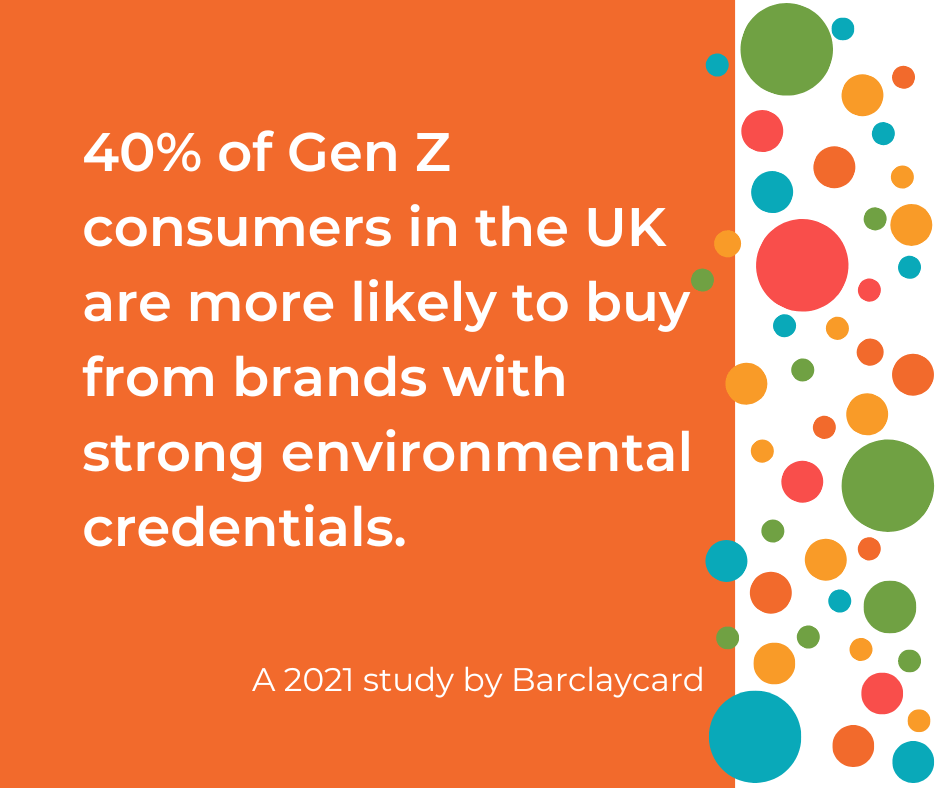
The eco-conscious generation
Gen Z, born between 1997 and 2012, is the most diverse and digitally connected generation in history. They are growing up in a world of climate change, pollution, and plastic waste, and they are acutely aware of the impact that humans are having on the environment.
As a result, Gen Z has a strong commitment to sustainability, with 82% expressing concern about the state of the planet. They are willing to take action, with 72% saying they have already changed their behaviour to reduce their impact on the environment.
Regarding spending habits, Gen Zers are willing to put their money where their values are. According to a 2020 study, 66% of Gen Zers are willing to pay more for sustainable or environmentally friendly products, and 73% are willing to pay more for ethically sourced products.
In addition, Gen Zers are looking for brands to take a leadership role in sustainability. According to a report by IBM, 56% of Gen Zers believe that businesses should take responsibility for environmental issues, and 72% believe that companies should be held accountable for their environmental impact.
To connect with Gen Z, brands must prioritise sustainability and communicate their efforts transparently.
Patagonia has made environmental sustainability a core part of its mission. It regularly shares information about its sustainability efforts on its website and social media channels. As Patagonia’s founder, Yvon Chouinard, said: “The hardest thing we’ve ever done is take full responsibility for the entire life cycle of our products.”
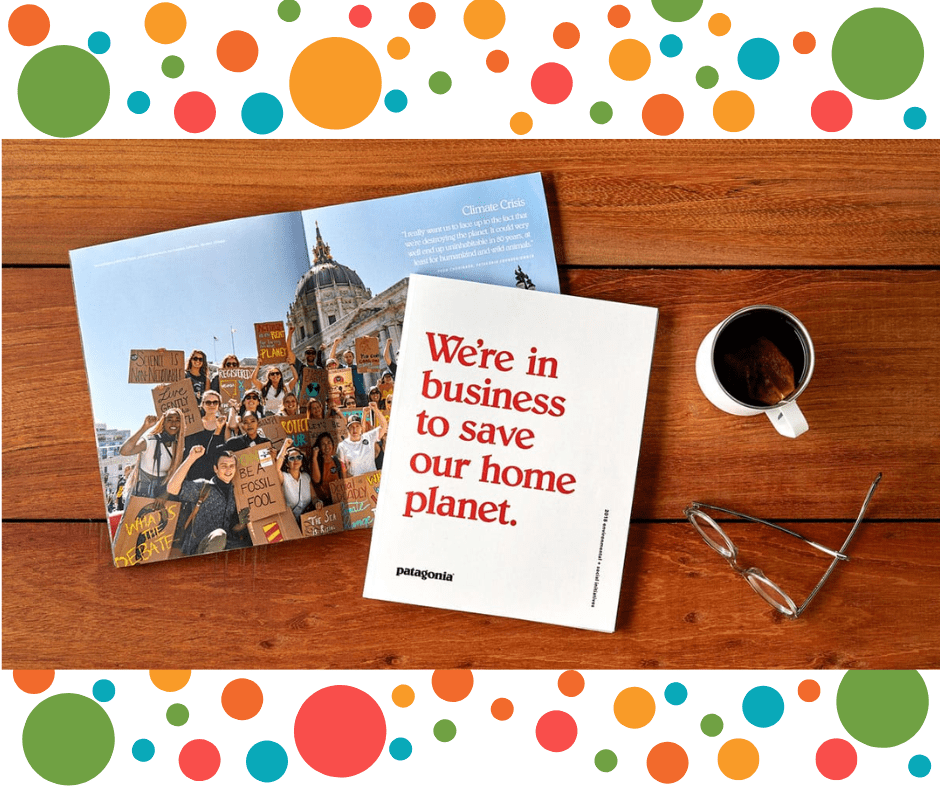
The business case for sustainability
In addition to meeting the expectations of eco-conscious consumers, businesses can also benefit from incorporating sustainable practices into their operations. Here are some of the main benefits that sustainability can bring to brands:
- Increased customer loyalty: Most Gen Zers are willing to pay more for sustainable products. By prioritising sustainability, businesses can differentiate themselves from competitors and build a loyal customer base. A survey by Cone Communications found that 91% of consumers are likely to switch to a brand that supports a good cause, and 62% are willing to pay more for products from such a brand.
- Cost savings: Implementing sustainable practices can also lead to business cost savings. For example, reducing energy consumption, waste, and water usage can lower operating costs and increase efficiency. According to the Carbon Trust, businesses can save up to 20% on their energy bills by implementing energy-saving measures.
- Improved brand reputation: Sustainability is increasingly becoming a key factor in shaping a brand’s reputation. Businesses prioritising sustainability can differentiate themselves as responsible and forward-thinking, which can help attract and retain customers. A study by Nielsen found that 81% of global respondents felt strongly that companies should help improve the environment, and 73% said they would change their consumption habits to reduce their environmental impact.
- Attracting and retaining employees: Gen Zers also prioritise sustainability in their job searches, with 75% saying they want to work for an environmentally responsible company. By implementing sustainable practices, businesses can attract and retain top talent, increasing productivity and innovation.
One example of a business that has successfully incorporated sustainability into its operations is IKEA. The company has committed to becoming climate positive by 2030. It has implemented a range of sustainability initiatives, such as using renewable energy and sourcing sustainable materials. According to IKEA’s Chief Sustainability Officer, Pia Heidenmark Cook, “The more sustainable we become as a business, the more we grow.”
Sustainability can bring a range of benefits to companies, from increased customer loyalty to cost savings and improved brand reputation. By prioritising sustainability, businesses can meet the expectations of eco-conscious consumers and drive positive impact and growth.
Tips for marketing to Gen Z
As a marketer, it’s essential to understand how to effectively communicate with Gen Z and appeal to their eco-conscious values. Here are some practical tips to consider:
- Prioritise sustainability in product development: When developing products, consider using sustainable materials and designing environmentally friendly products. This can differentiate your brand from competitors and appeal to Gen Z’s values. For example, the shoe brand Allbirds uses sustainable materials like eucalyptus and recycled water bottles to create products. The company has positioned itself as a leader in sustainable footwear.
- Use transparent messaging: Gen Z values transparency and authenticity, so it’s important to communicate your brand’s sustainability efforts transparently. For example, the beauty brand Lush uses its website and social media channels to share detailed information about its sustainability initiatives, such as its commitment to using ethical and sustainable ingredients.
- Consider sustainable packaging: Gen Z is concerned about plastic waste, so consider using sustainable packaging options like biodegradable materials, recycled content, or reusable containers. For example, Trader Joe’s grocery chain has committed to reducing its plastic packaging and has introduced initiatives like compostable produce bags and reusable food storage containers.
- Support environmental causes: Gen Z values brands that take a leadership role on environmental issues, so consider supporting environmental causes that align with your brand values. For example, the clothing brand Reformation partners with non-profit organisations like the National Forest Foundation to support reforestation efforts.
- Engage with Gen Z on social media: Gen Z is a digital-first generation, particularly active on social media. By engaging with them on social media platforms like Instagram, TikTok, and Twitter, you can build a relationship with this demographic and effectively communicate your brand’s sustainability efforts. For example, the cleaning brand Method has built a loyal following on social media by sharing visually appealing and engaging content about its sustainability initiatives.
By prioritising sustainability in product development, using transparent messaging, considering sustainable packaging, supporting environmental causes, and engaging with Gen Z on social media, brands can effectively connect with this eco-conscious generation and build a loyal customer base.
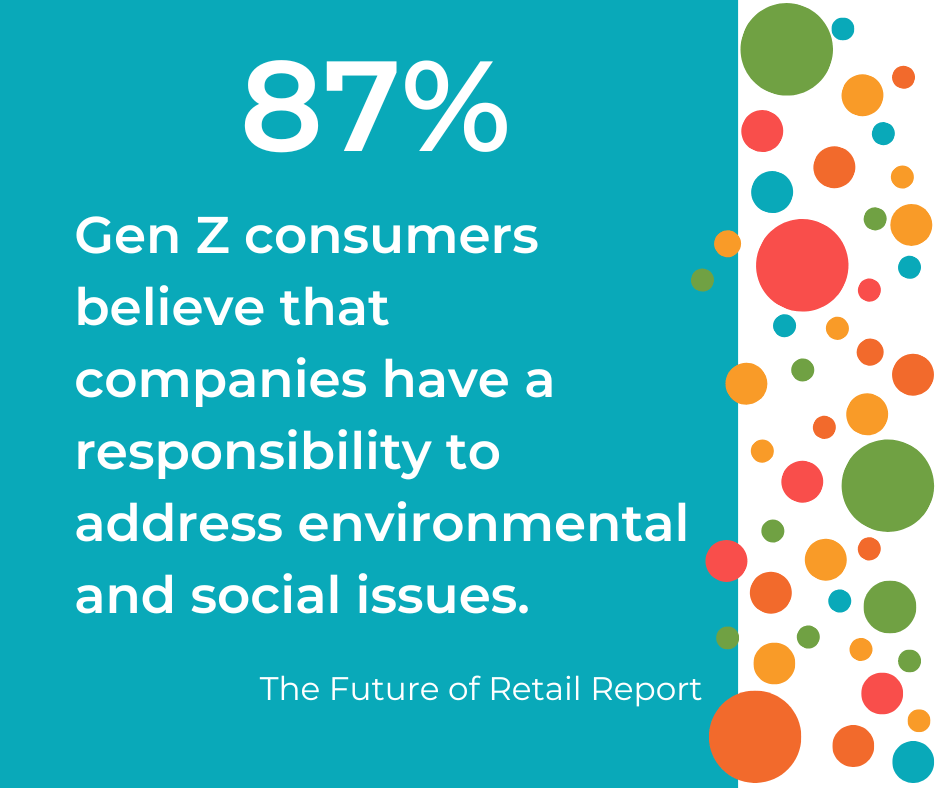
Get regular insights
Keep up to date with the latest insights from our research as well as all our company news in our free monthly newsletter.

Case studies from around the world
There are many examples of companies around the world that have successfully marketed to Gen Z by highlighting their sustainability credentials. Here are a few examples from different regions, along with the lessons that other businesses can learn from them:
United Kingdom

The fashion brand Stella McCartney has long been known for its commitment to sustainability. The brand uses sustainable materials like organic cotton and recycled polyester, and its website provides detailed information about its sustainability efforts. By prioritising sustainability and transparency, Stella McCartney has built a loyal following of environmentally conscious consumers.
The Lesson
Prioritise sustainability in all aspects of your business and communicate your efforts transparently.
Europe
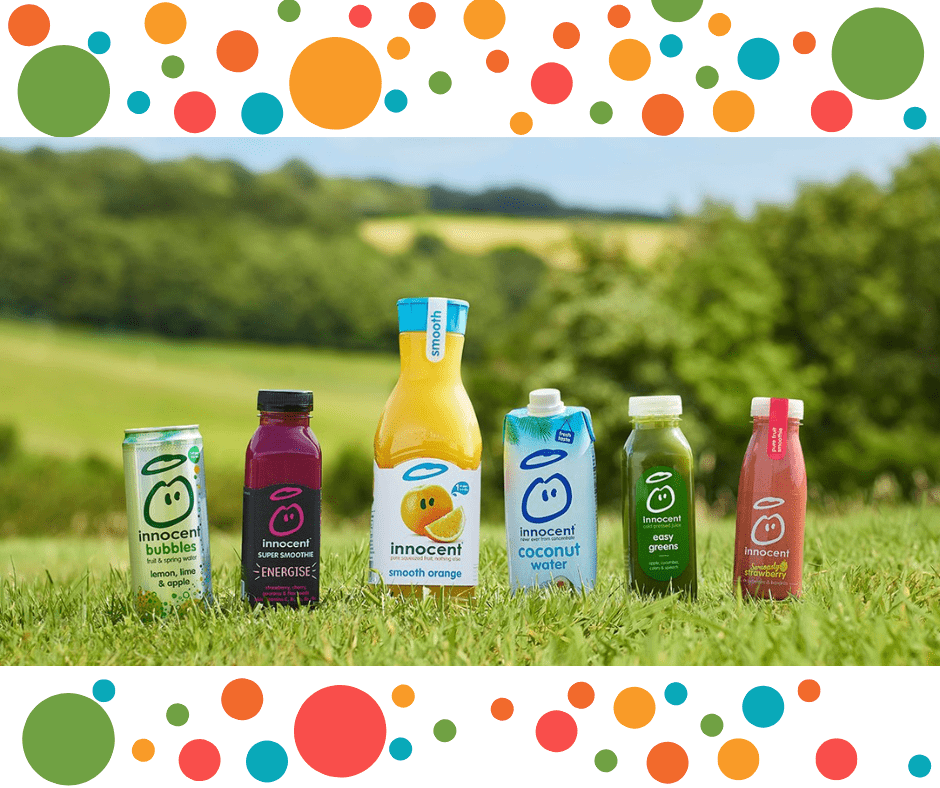
The beverage company Innocent Drinks has positioned itself as a socially responsible brand that supports environmental and social causes. The company donates a portion of its profits to charity and has committed to using sustainable materials and reducing its environmental impact. Innocent has built a strong brand reputation and a loyal customer base by connecting with consumers on a values-driven level.
The Lesson
Support causes that align with your brand values and communicate your impact to consumers.
India

The sustainable fashion brand Bhu:Sattva uses natural and sustainable materials like organic cotton, hemp, and linen to create its products. The brand has also implemented sustainable production practices like water-saving dyeing techniques and minimising waste. By offering high-quality and sustainable products, Bhu:Sattva has built a loyal following of eco-conscious consumers in India.
The Lesson
Prioritise sustainable materials and production practices in your products.
Japan

Karimoku, specialising in wooden furniture, has implemented sustainable practices throughout its supply chain. The company sources wood from sustainably managed forests and has committed to reducing its environmental impact. By prioritising sustainability and quality, Karimoku has built a strong brand reputation and a loyal customer base in Japan.
The Lesson
Prioritise sustainable sourcing and production practices to reduce environmental impact.
USA

The clothing brand Re/Done has built a loyal following of Gen Z consumers by using sustainable and ethical production practices. The company sources vintage denim and reworks it into new pieces, reducing waste and extending the material’s lifespan. Re/Done also uses organic and recycled materials in its products and has committed to minimising its environmental impact. By prioritising sustainability and transparency, Re/Done has gained a reputation as a socially responsible brand and has attracted a loyal following of eco-conscious consumers.
The Lesson
Use sustainable and ethical production practices, and consider extending the lifespan of materials to reduce waste. Communicate your sustainability efforts transparently to build a strong brand reputation.
Mexico
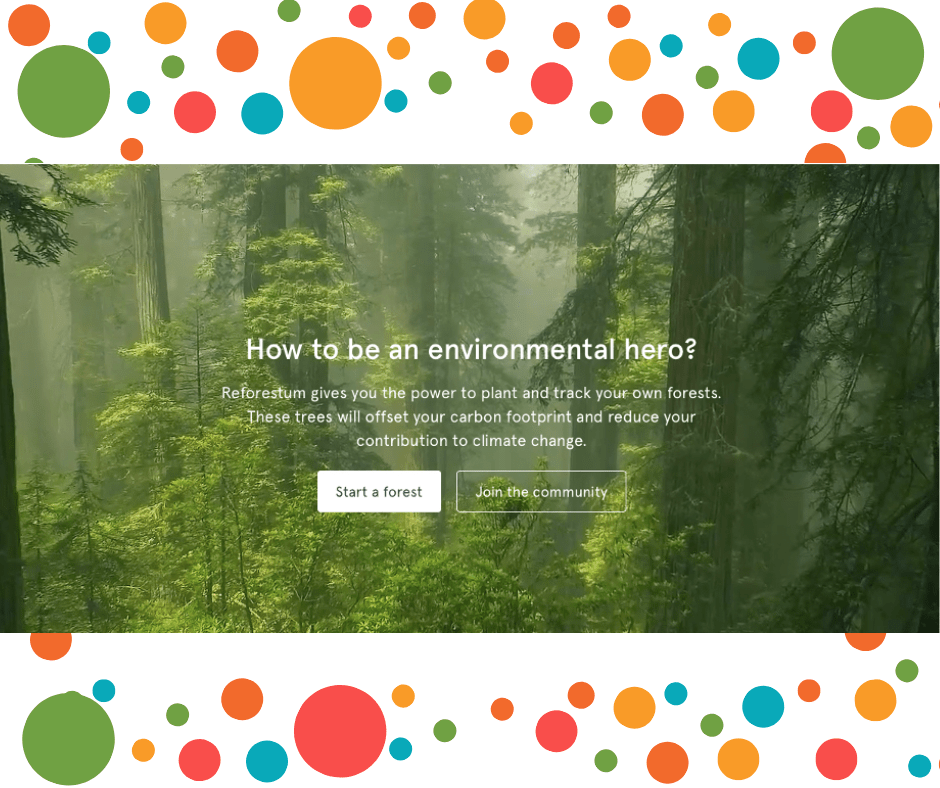
The cosmetics brand Reforestum has gained a following of environmentally conscious consumers in Mexico by using sustainably sourced and organic ingredients. The company has also committed to reforestation efforts in Mexico, helping to offset carbon emissions and promote biodiversity. By prioritising sustainability and social impact, Reforestum has built a loyal customer base and a strong brand reputation in Mexico.
The Lesson
Consider using sustainable and organic ingredients in your products and supporting local environmental causes.
Canada

The outdoor gear brand Arc’teryx has prioritised sustainability in its production practices, using recycled materials and minimising waste. The company has also committed to reducing carbon emissions and supporting environmental causes like reforestation. By communicating its sustainability efforts transparently and building a reputation as a socially responsible brand, Arc’teryx has gained a following of eco-conscious consumers in Canada and worldwide.
The Lesson
Use sustainable materials and production practices, and communicate your sustainability efforts transparently to build a strong brand reputation.
These case studies highlight the importance of prioritising sustainability and transparency, supporting causes that align with brand values, using sustainable materials and production practices, and offering innovative and sustainable packaging options. By implementing these strategies, businesses can effectively connect with Gen Z and build a loyal customer base.
Gen Z is a highly eco-conscious generation that values sustainability in their purchasing decisions and expects brands to take the lead on environmental issues. By prioritising sustainability in their business strategies, brands can differentiate themselves from competitors, build a loyal customer base, and drive positive impact and growth.
To appeal to Gen Z, businesses should consider using sustainable materials and production practices, communicating their sustainability efforts transparently, and supporting environmental causes that align with their brand values. By engaging with Gen Z on social media and building a relationship based on shared values, businesses can connect with this growing demographic and drive long-term success.
As marketers, staying informed about the latest trends and insights on Gen Z and sustainability is important. By deepening our understanding of this demographic and its values, we can create effective marketing strategies that resonate with Gen Z and drive positive impact for our businesses and the planet.
Want to learn more about Gen Z? Download The Definitive Guide to Gen Z to discover what other values are important to this generation with our full report.






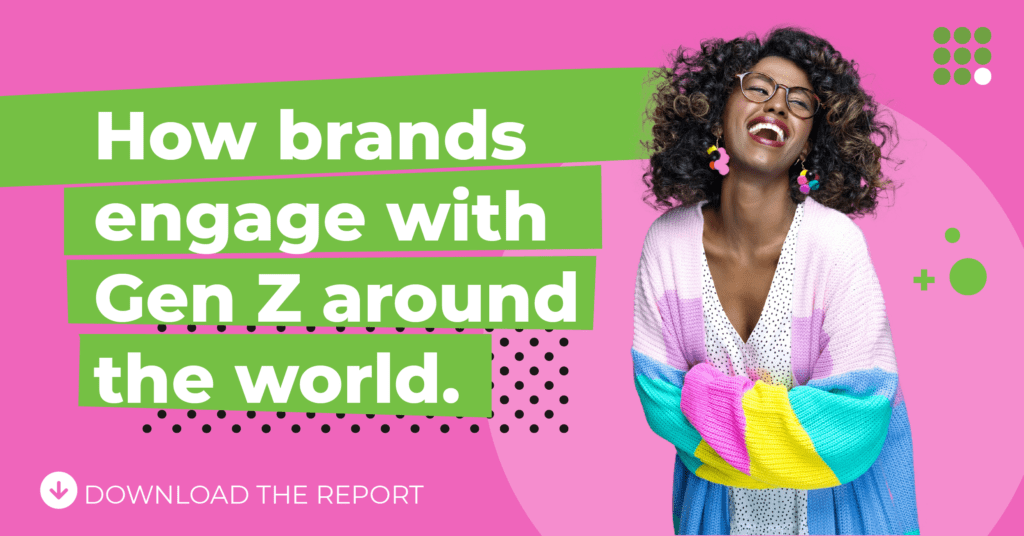
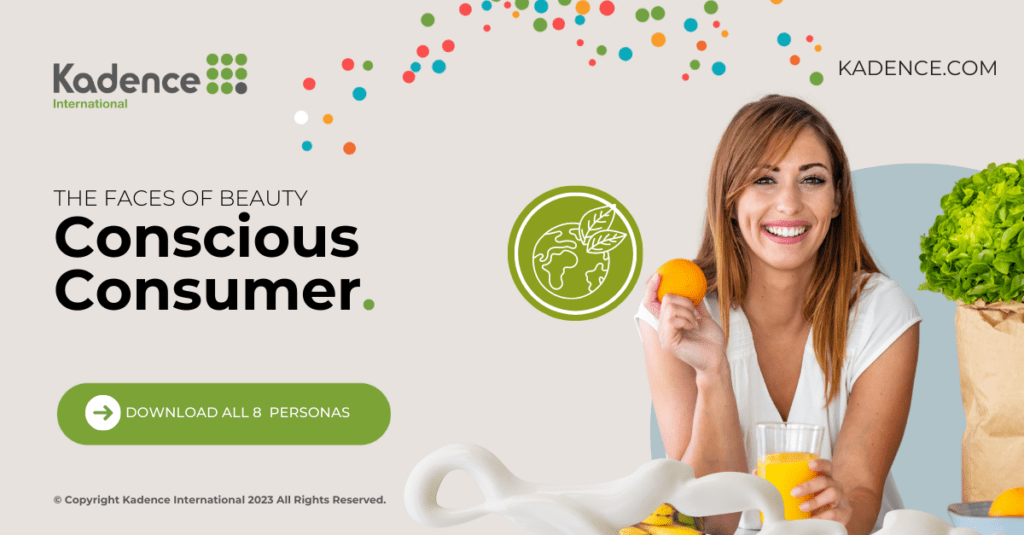


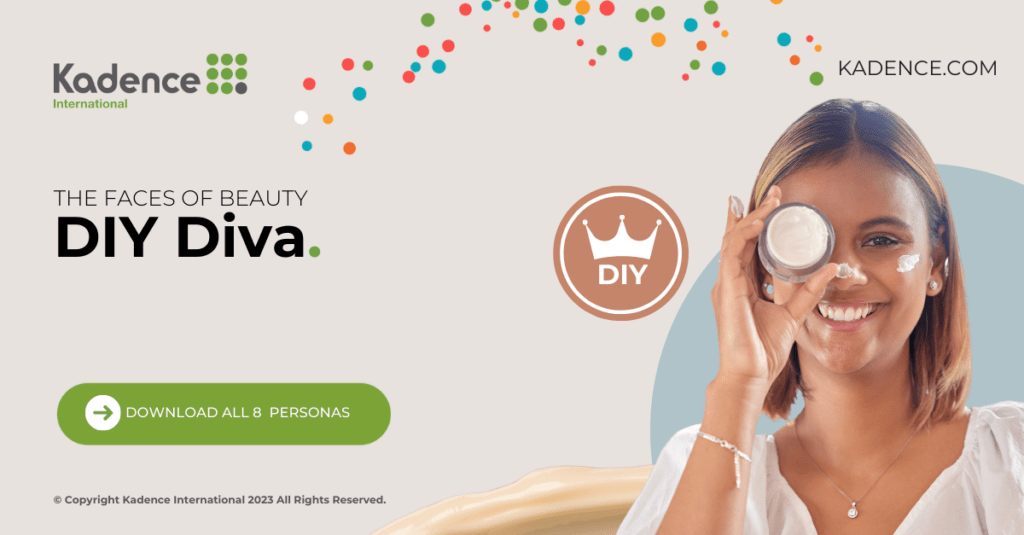
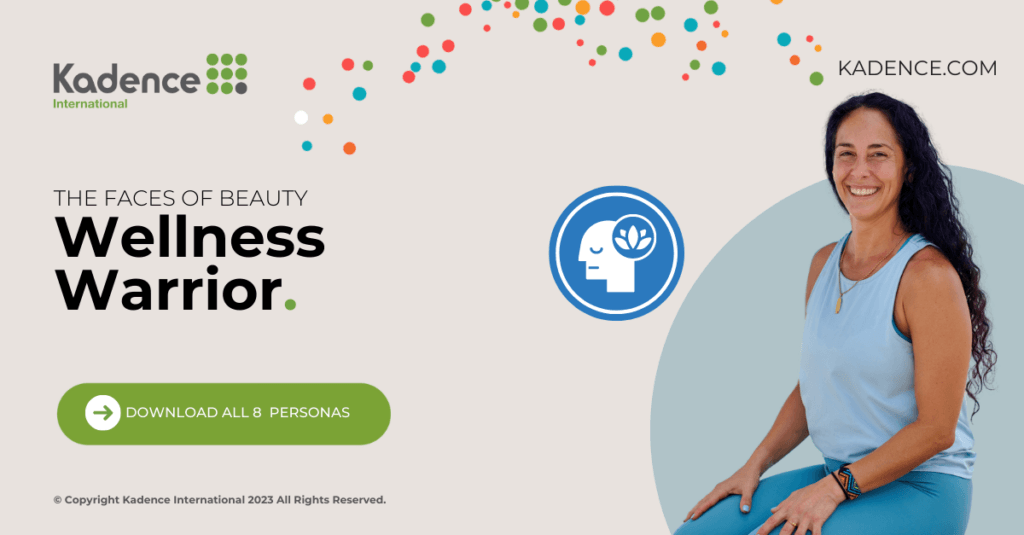

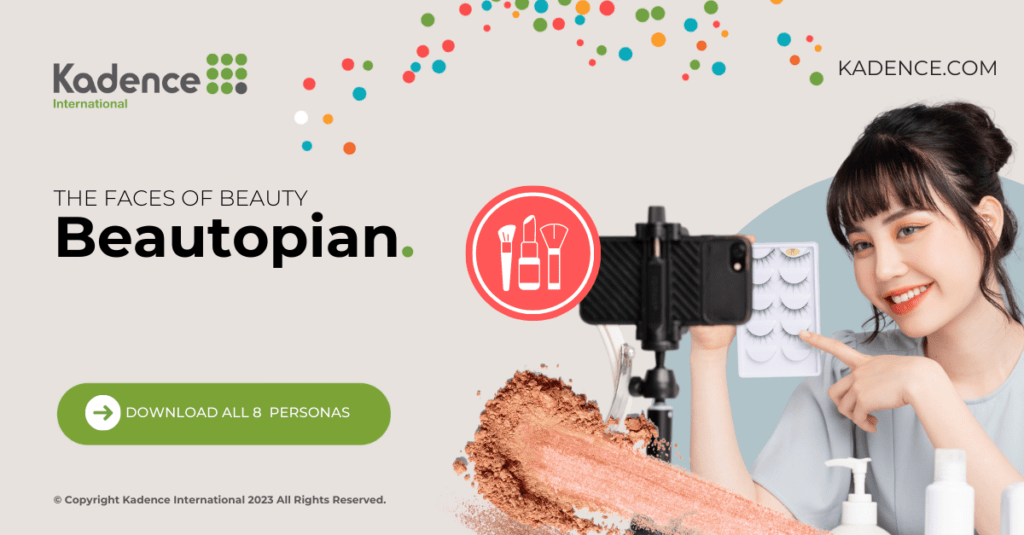
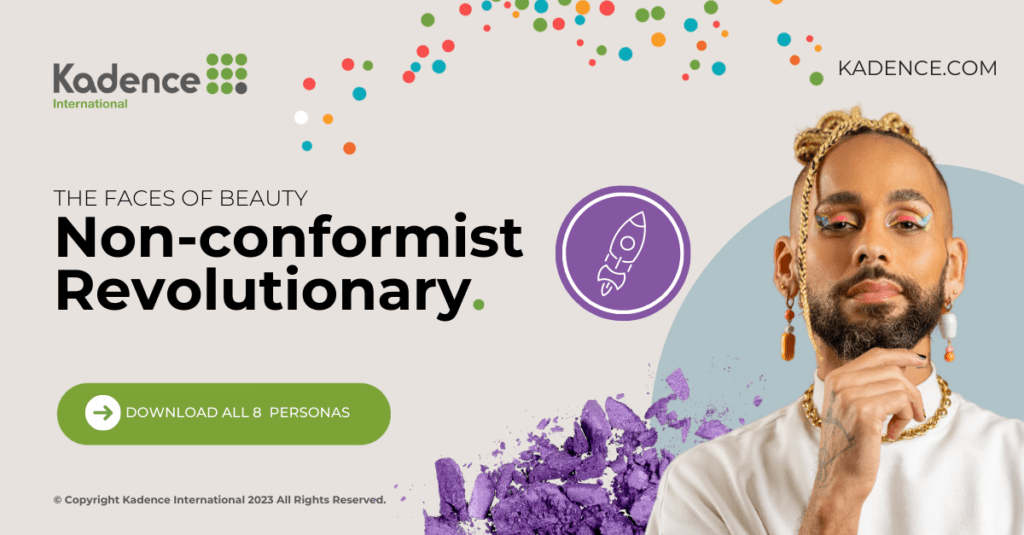
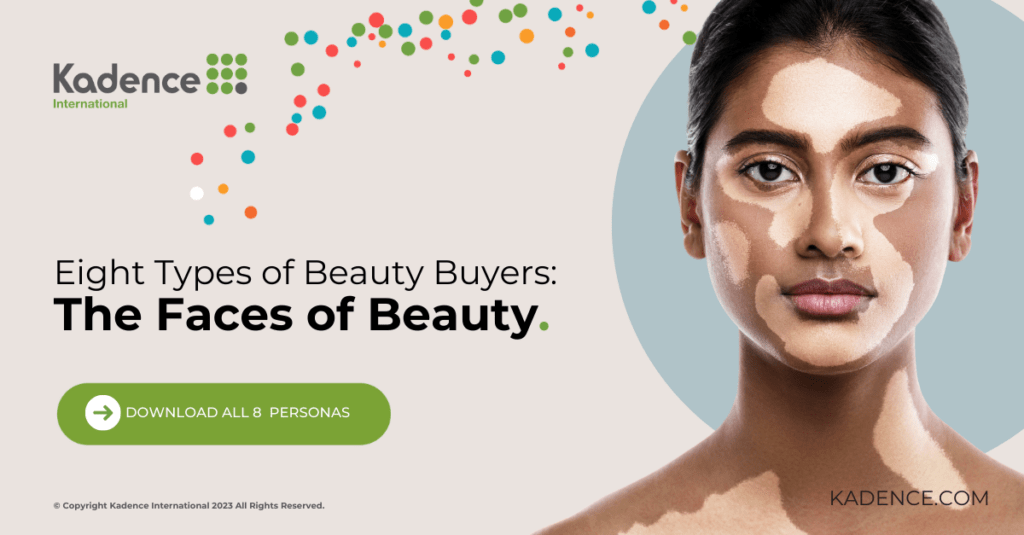
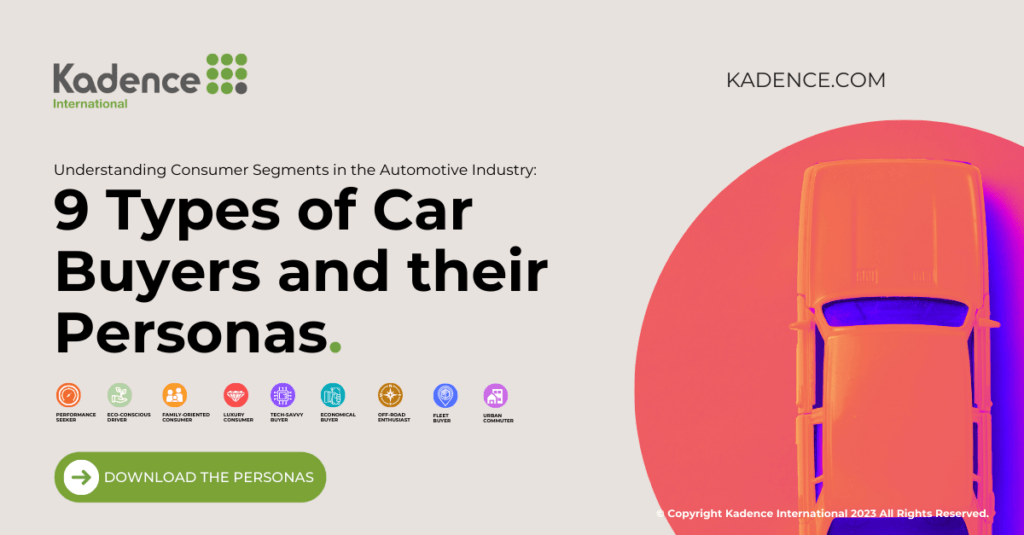
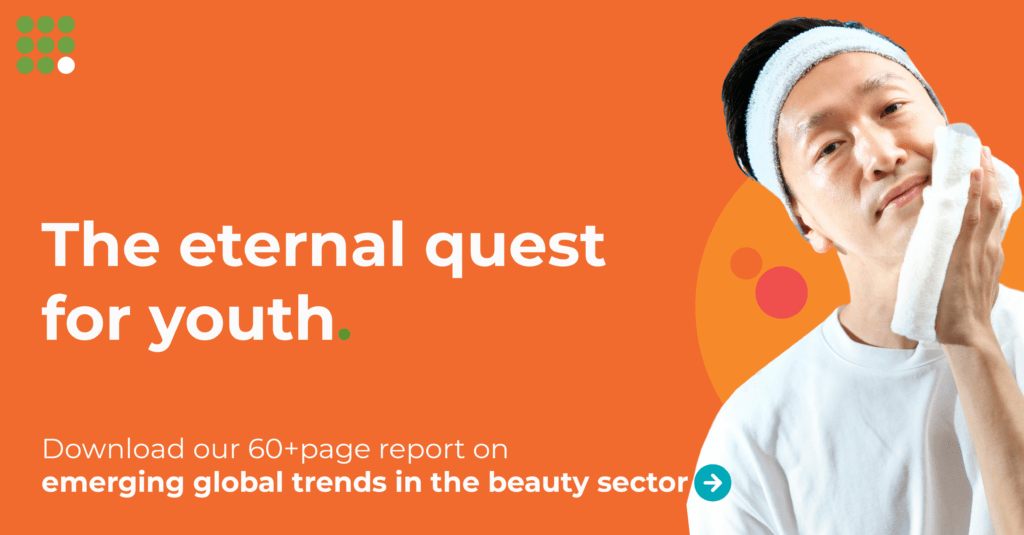



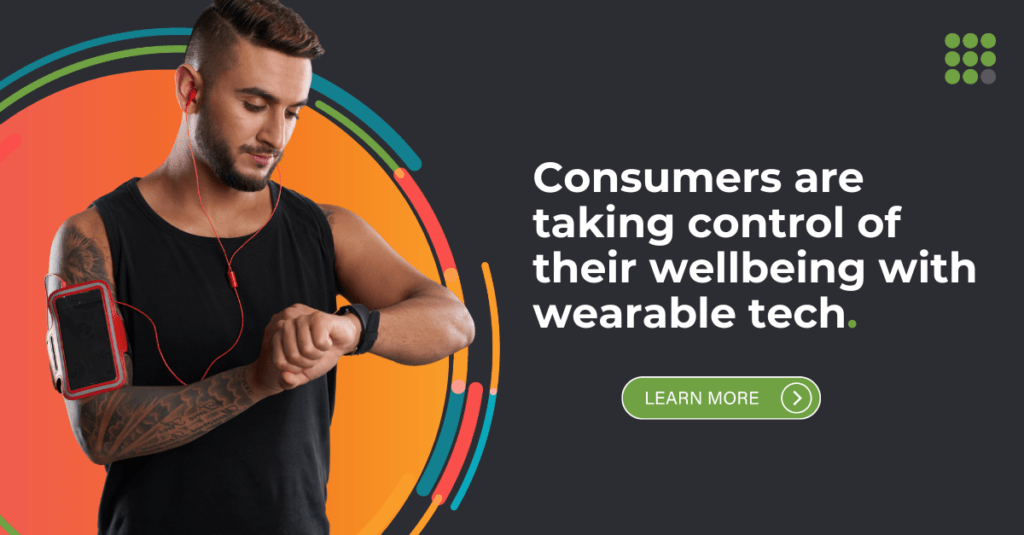
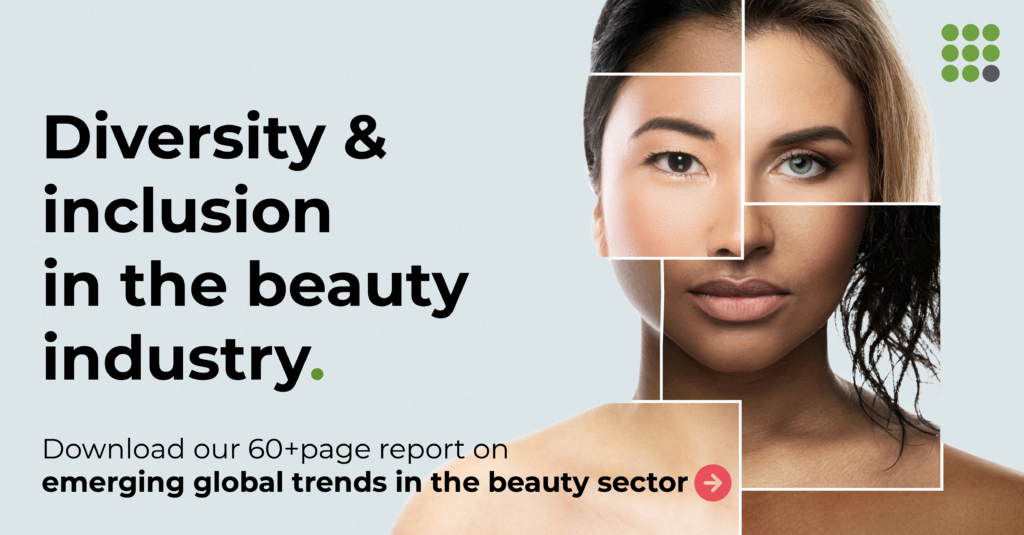
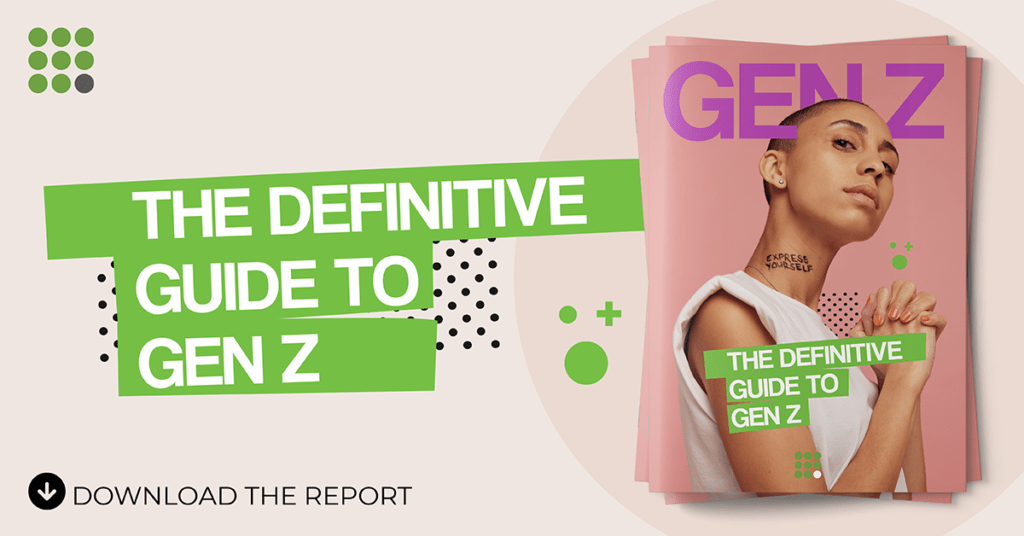
 Senior Marketing Executive
Senior Marketing Executive Sales & Marketing
Sales & Marketing Vital Strategies
Vital Strategies
 Customer Intelligence Director
Customer Intelligence Director